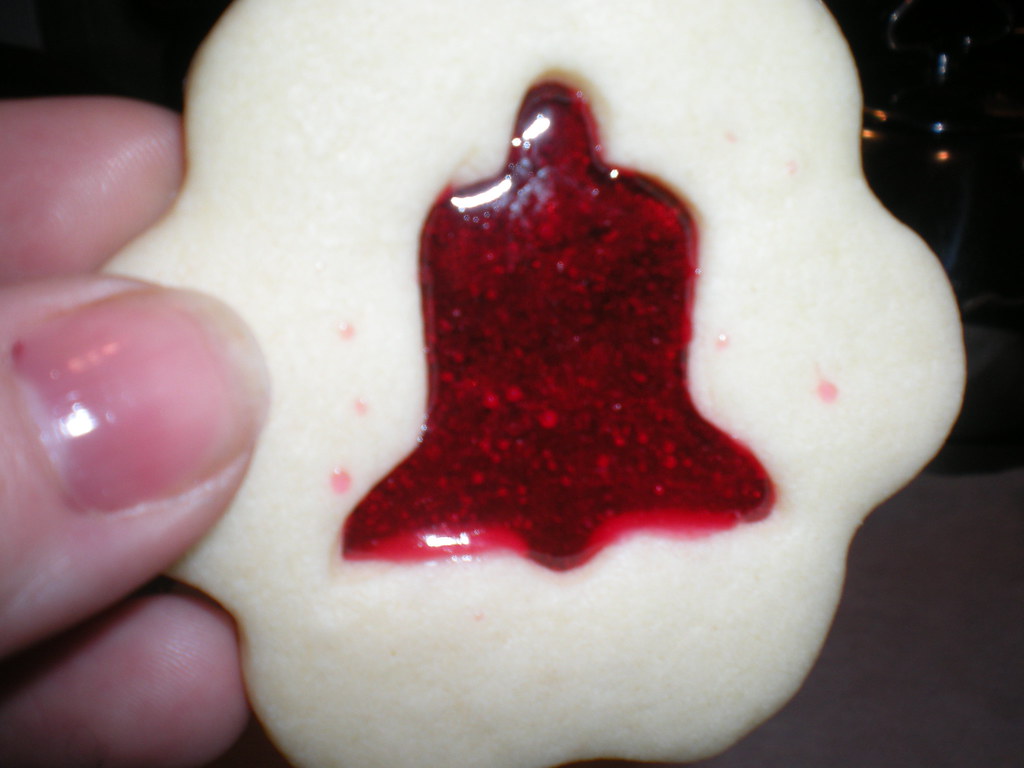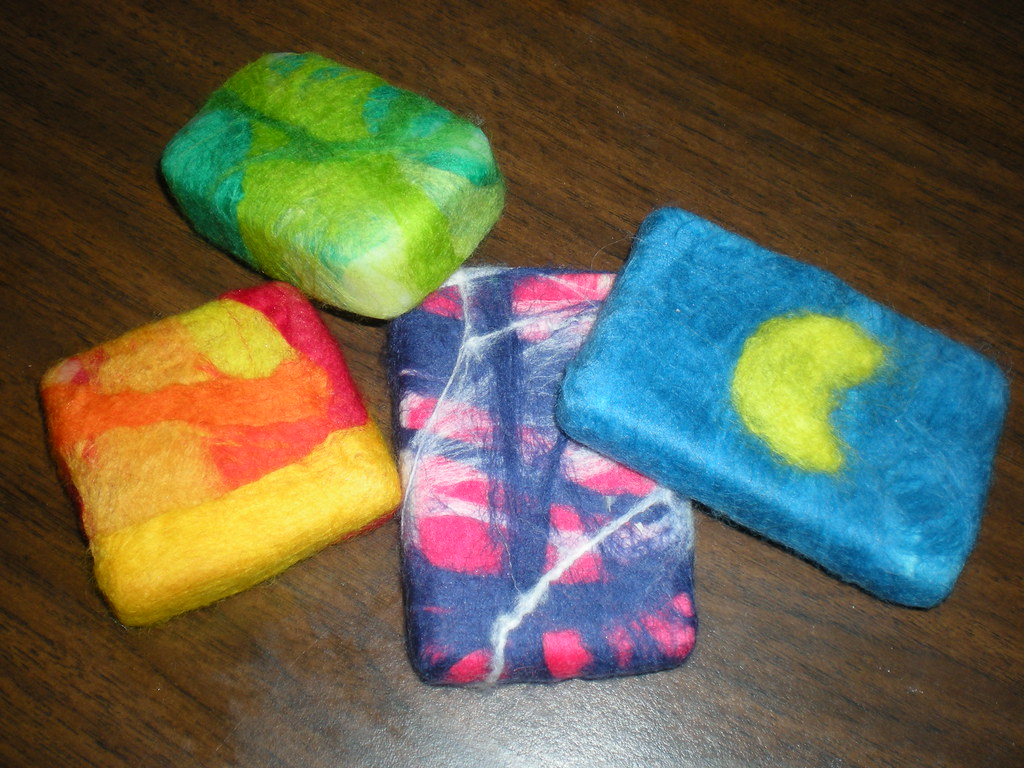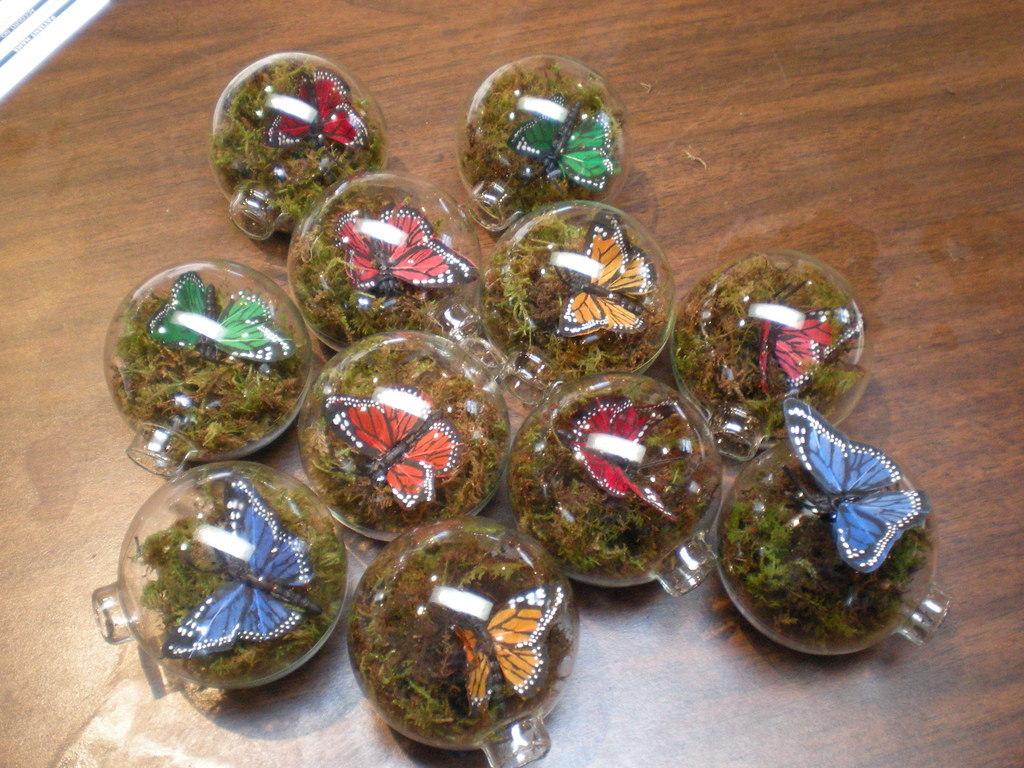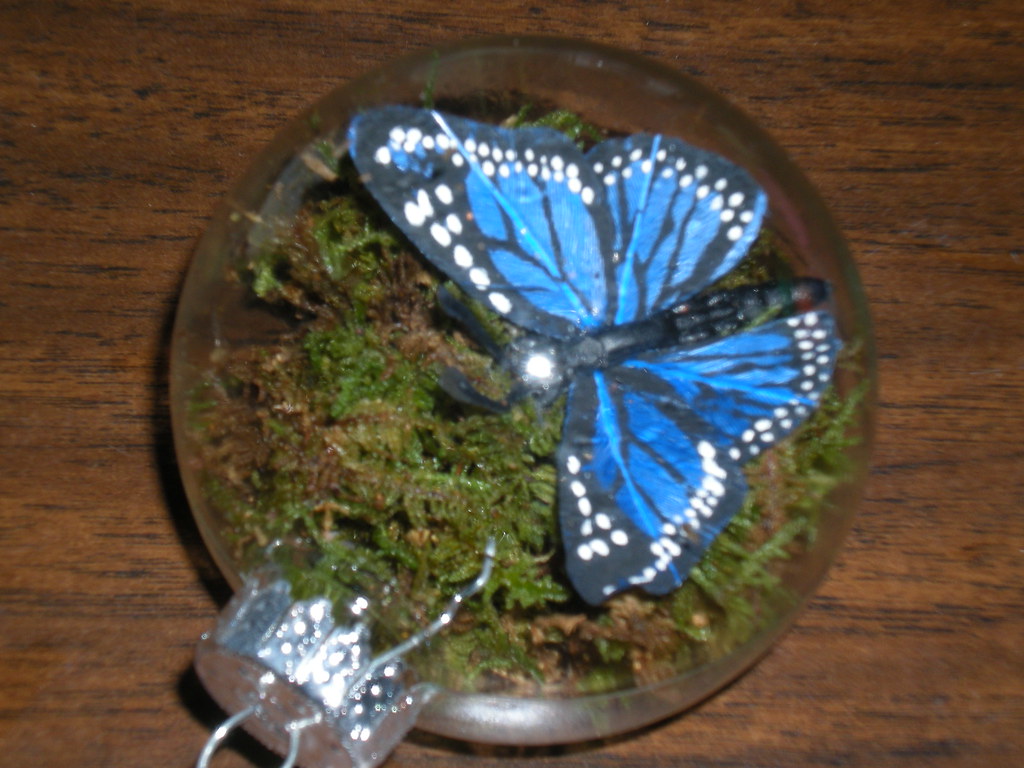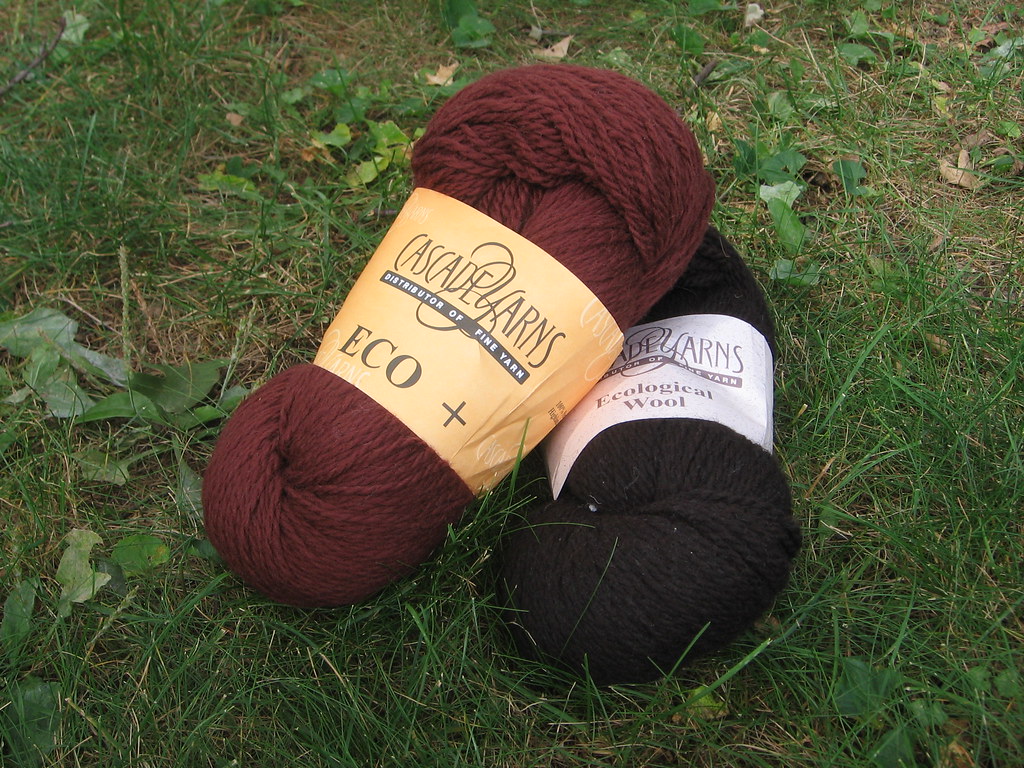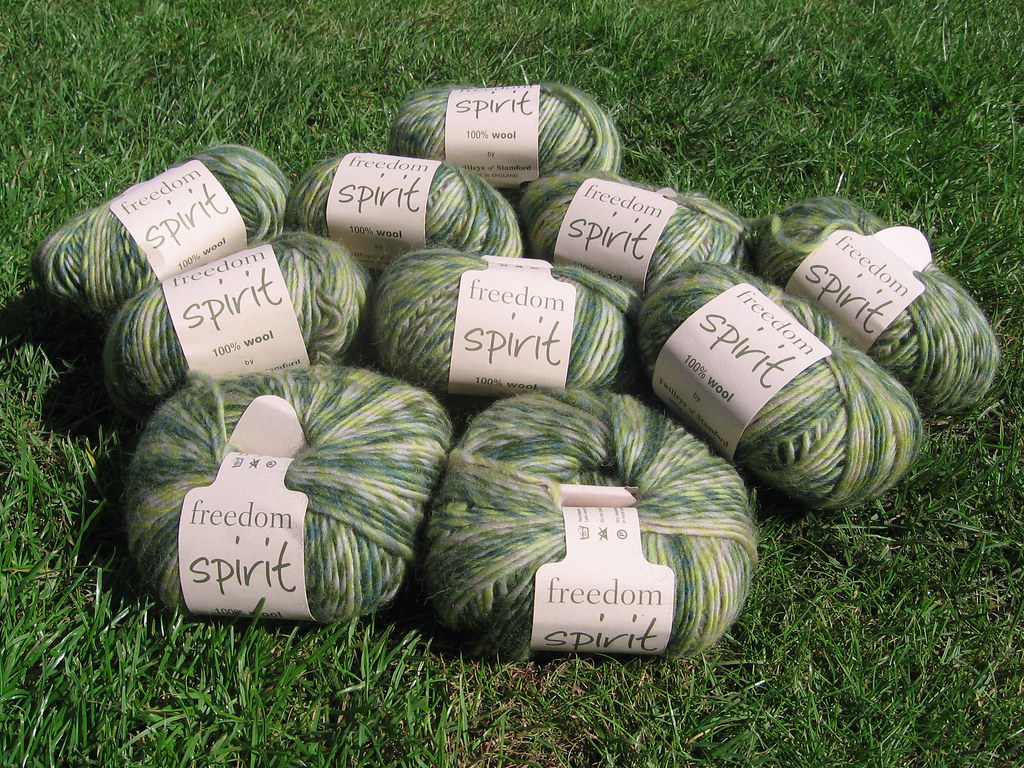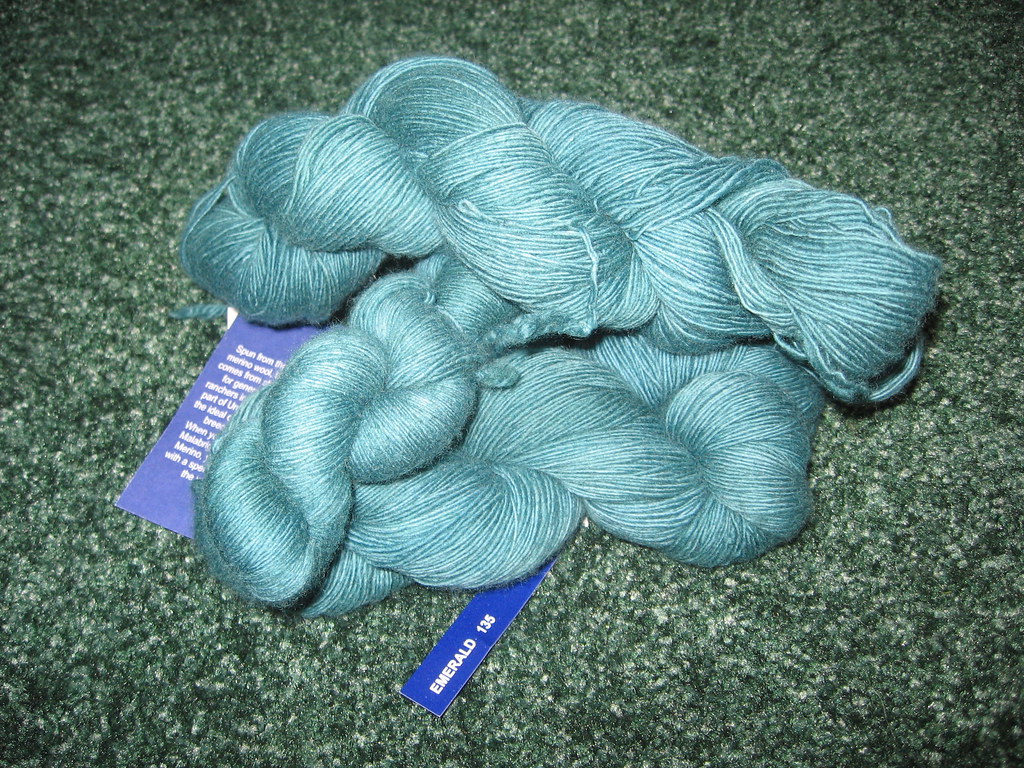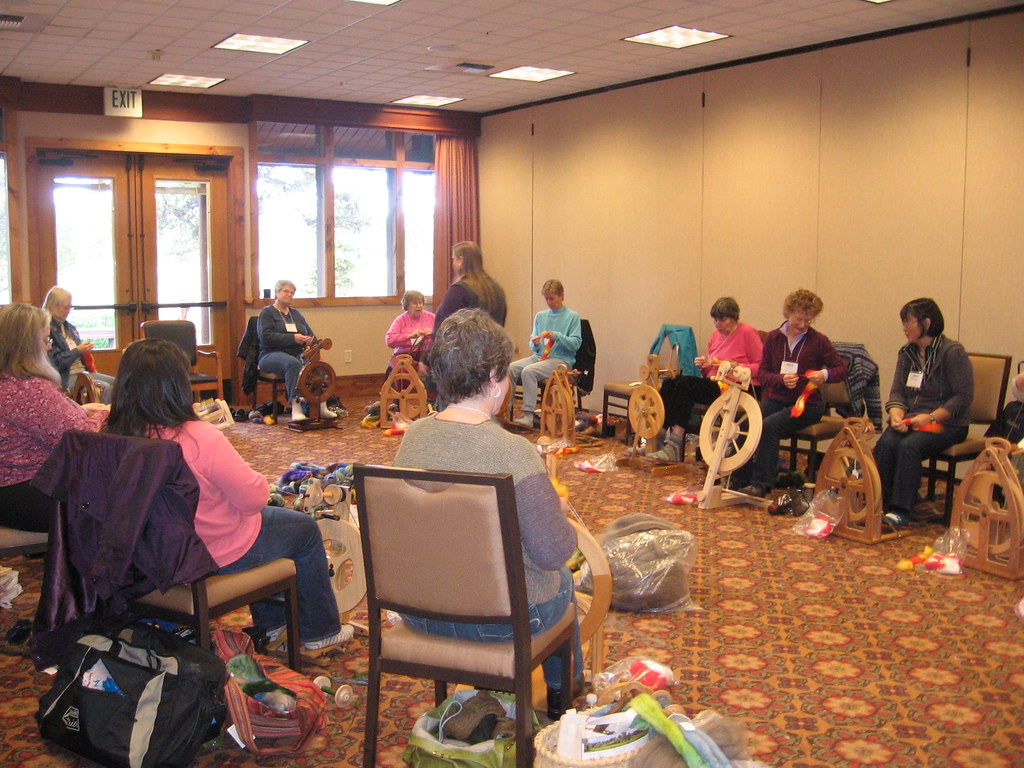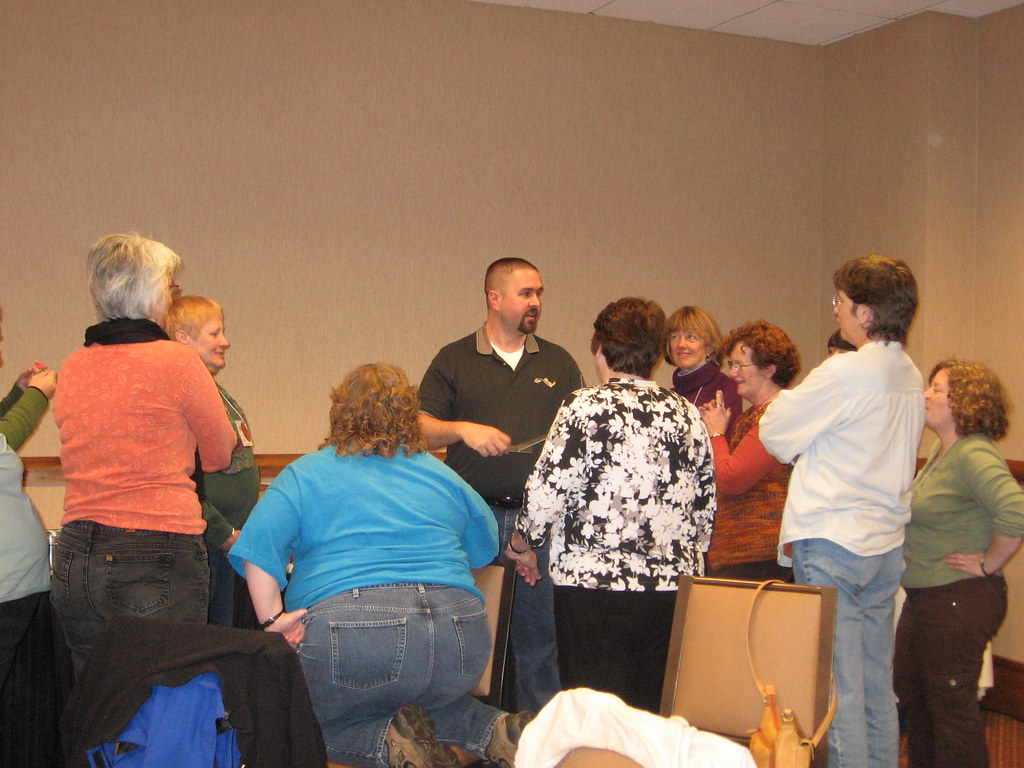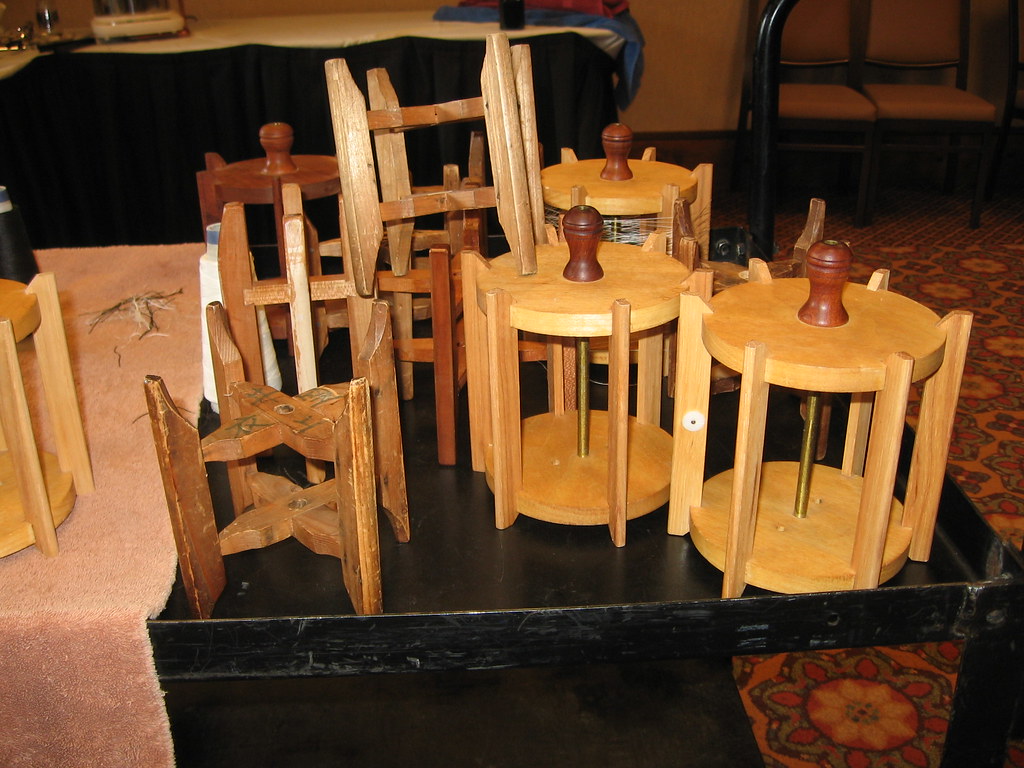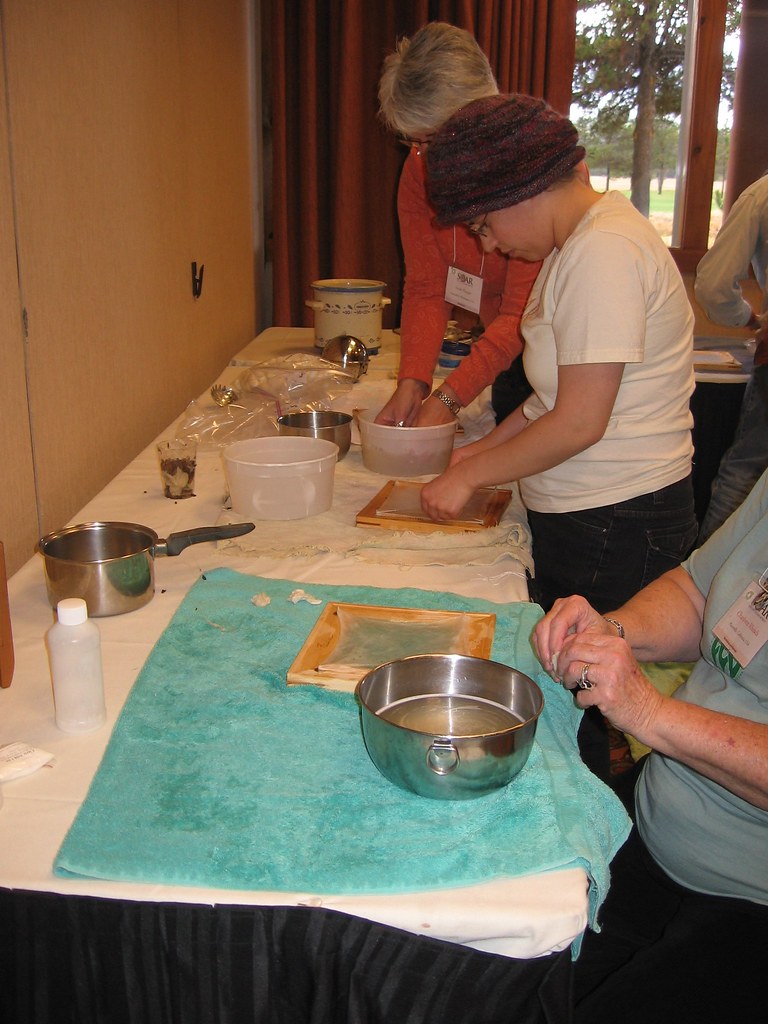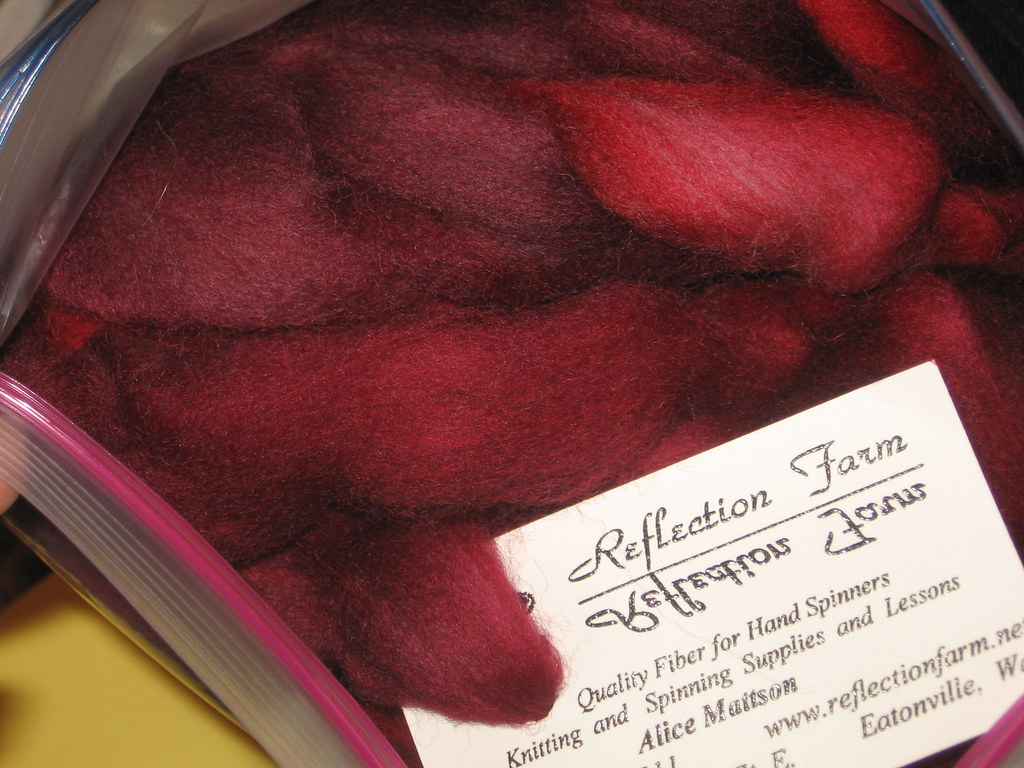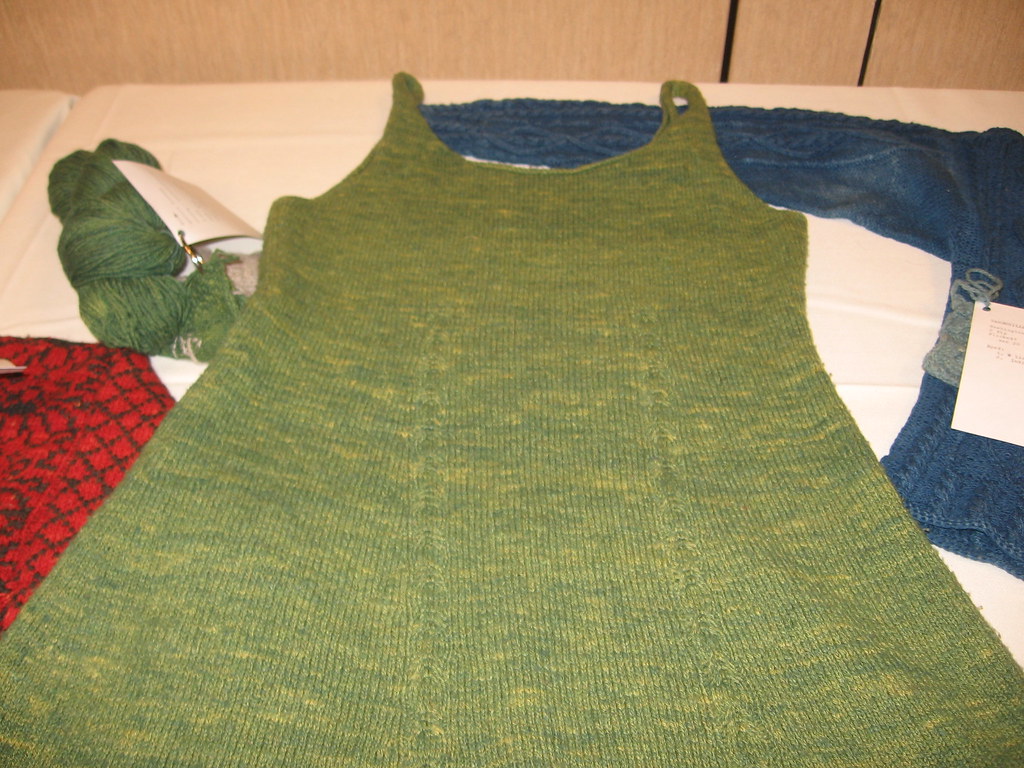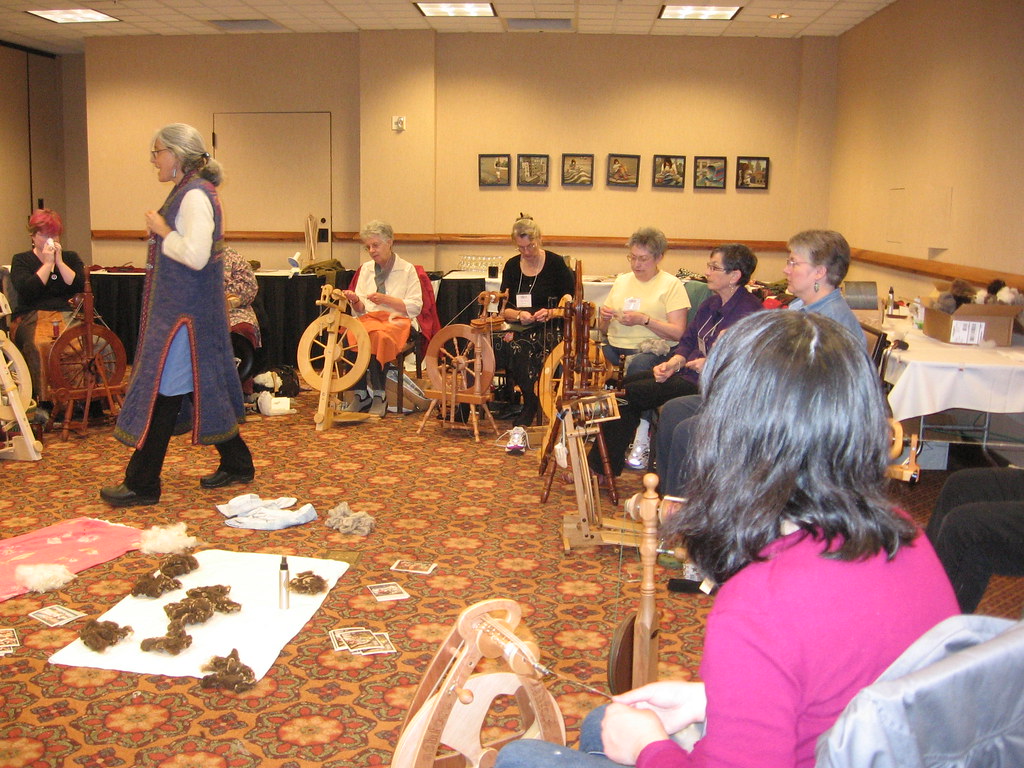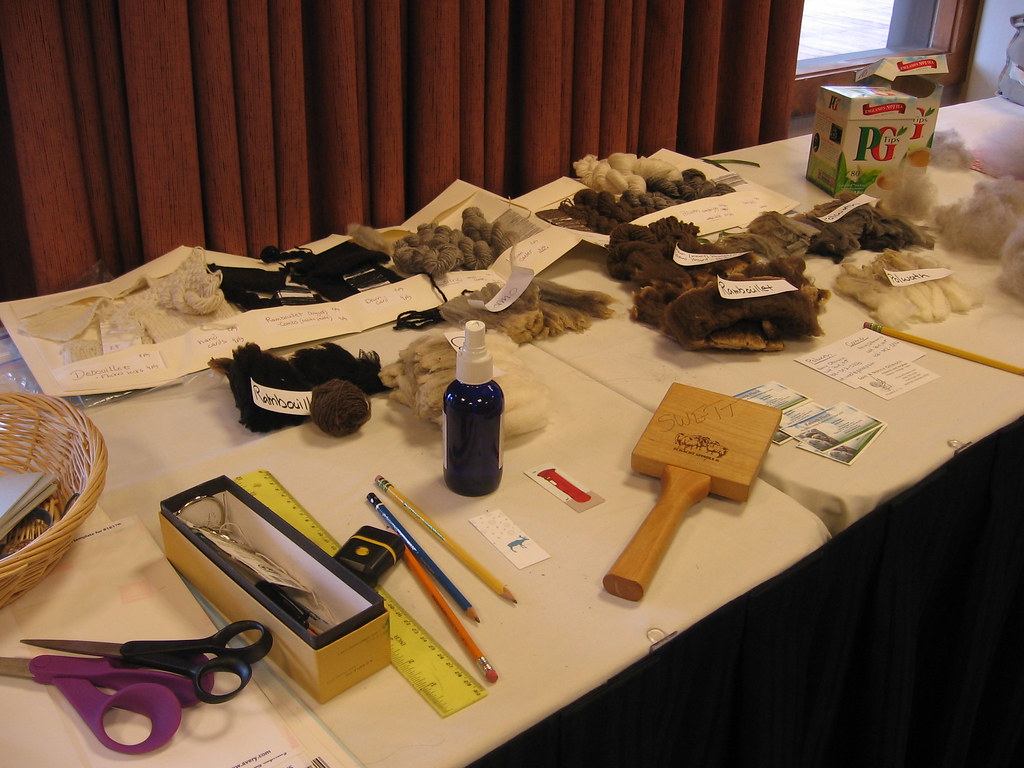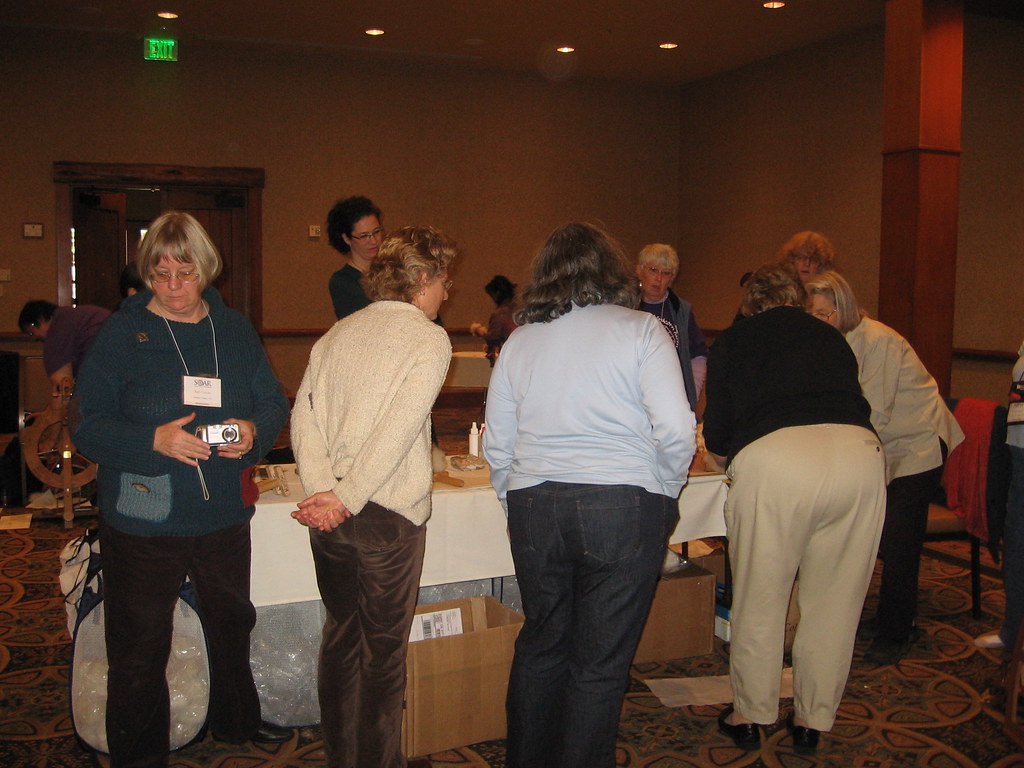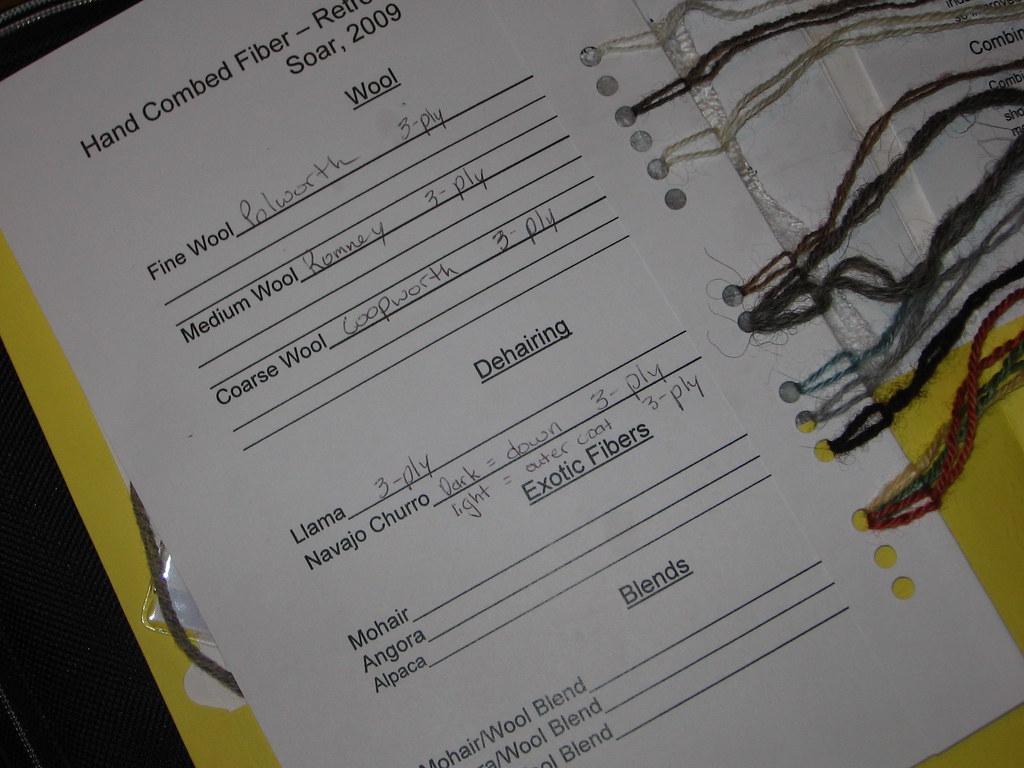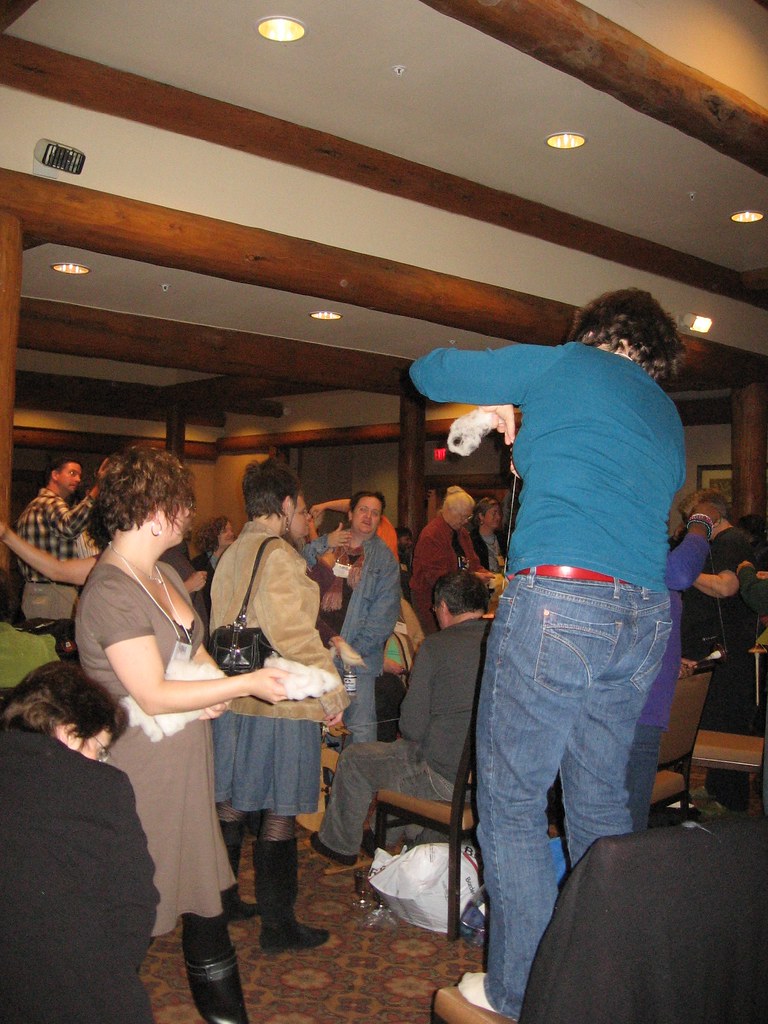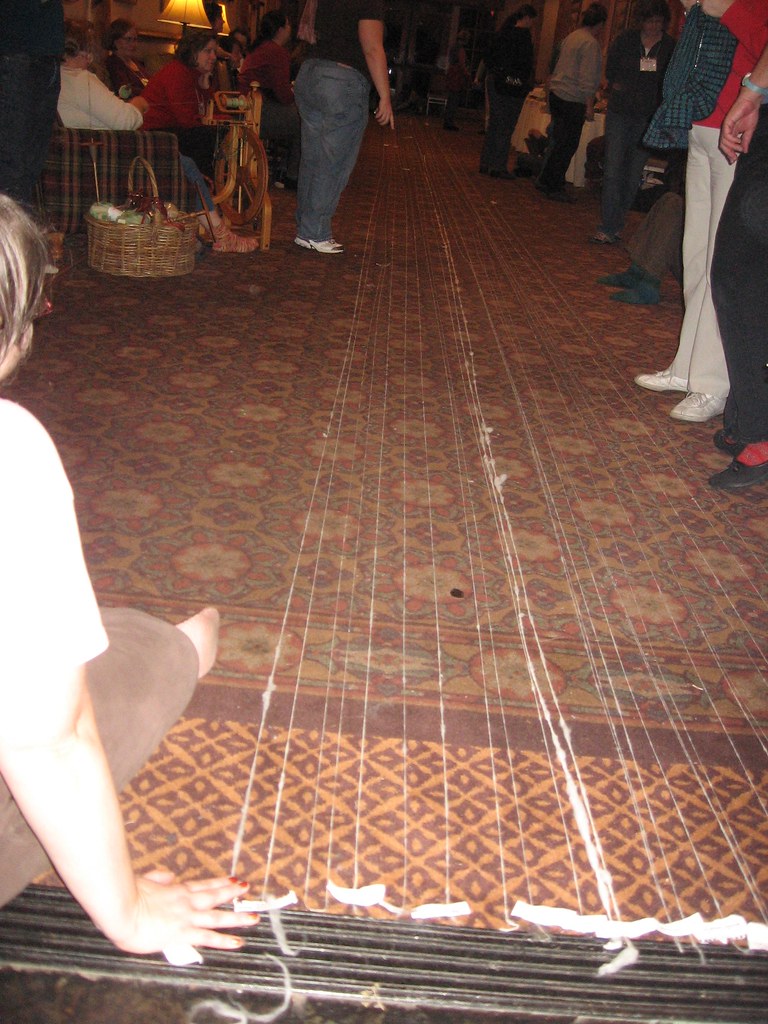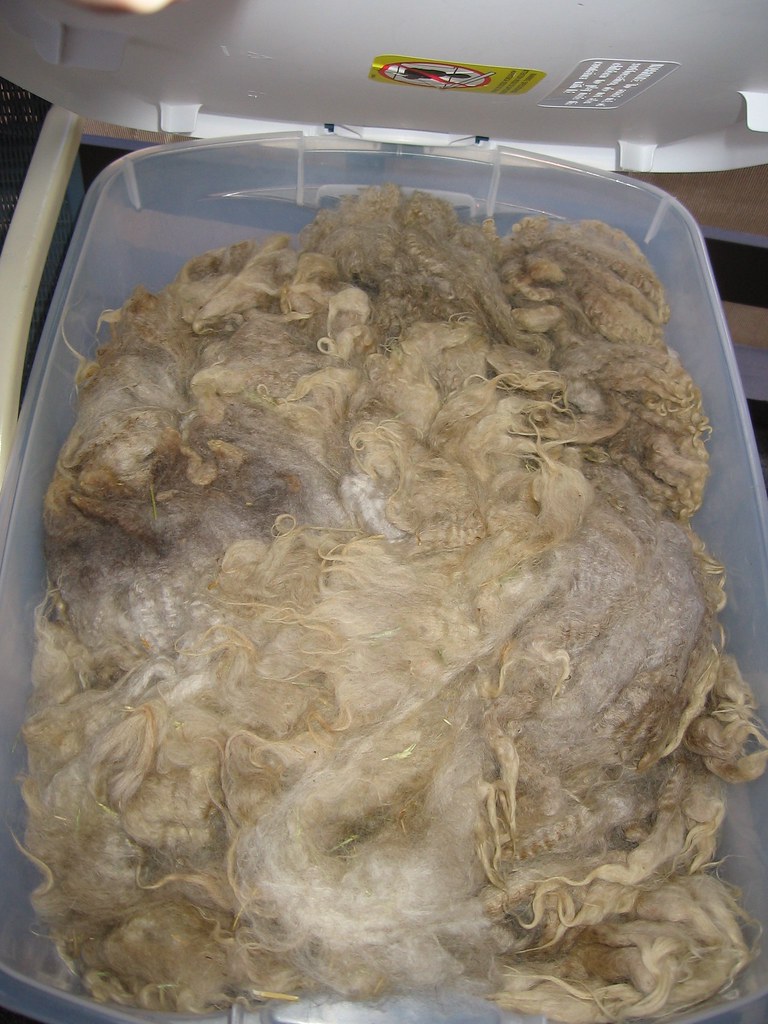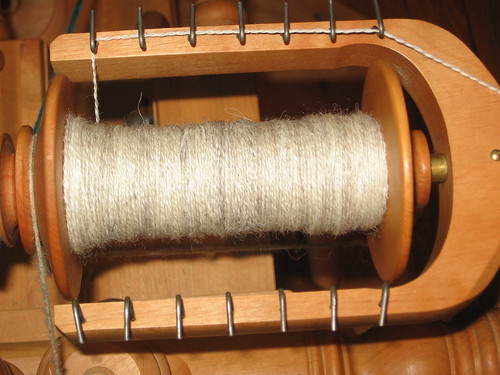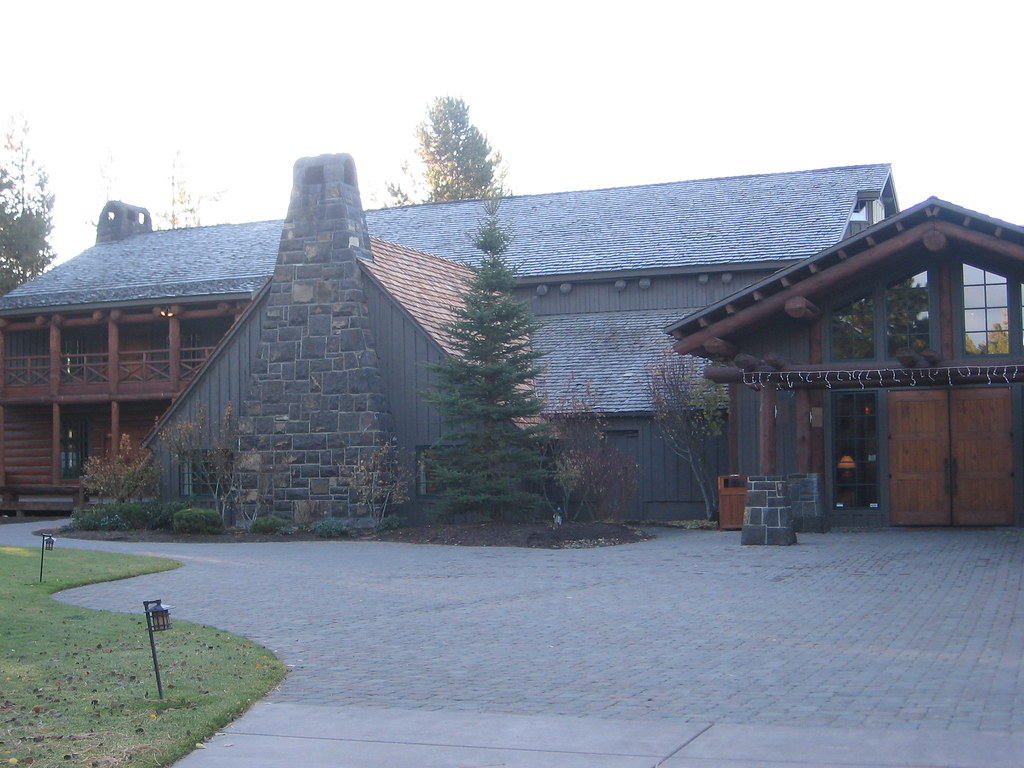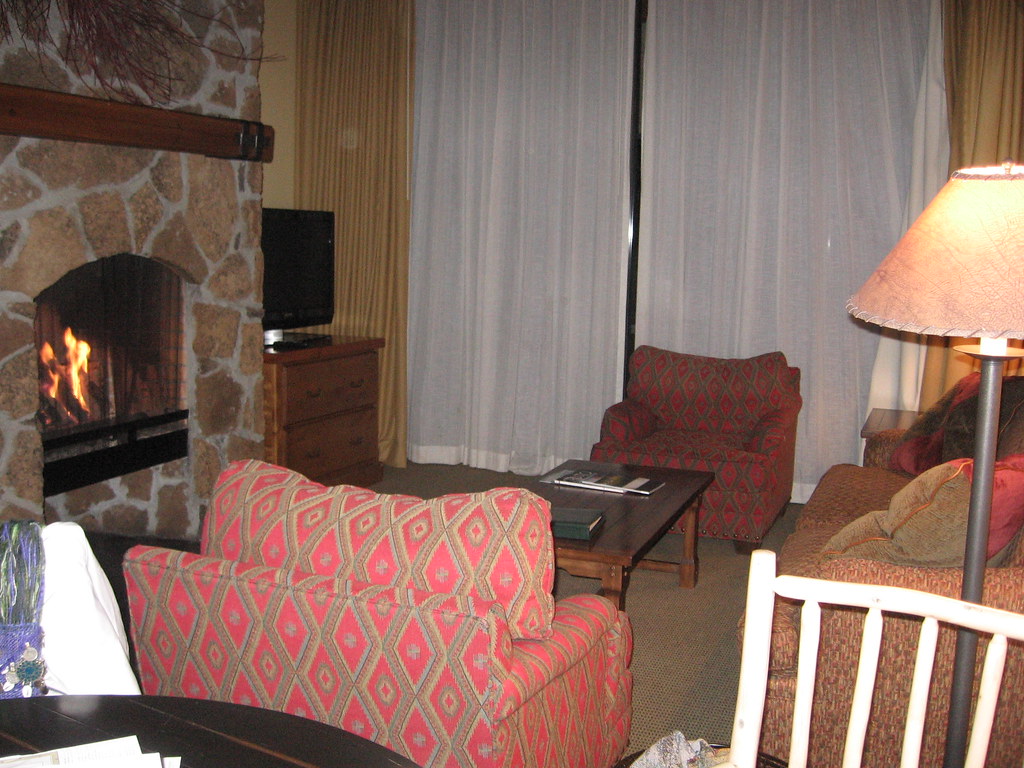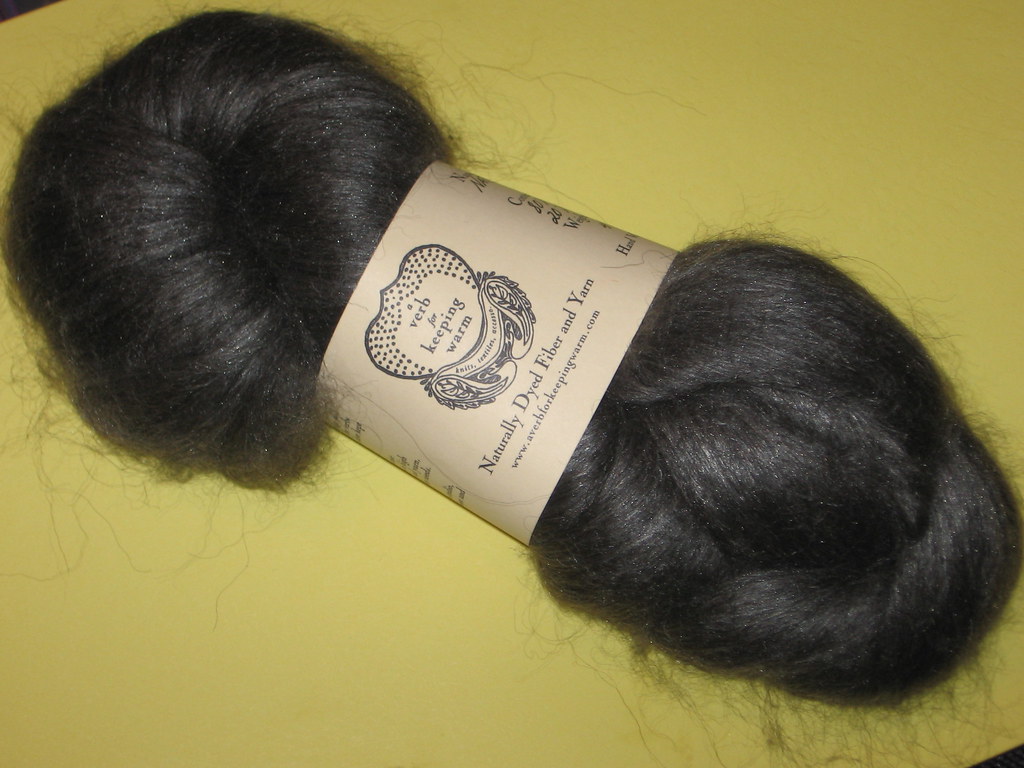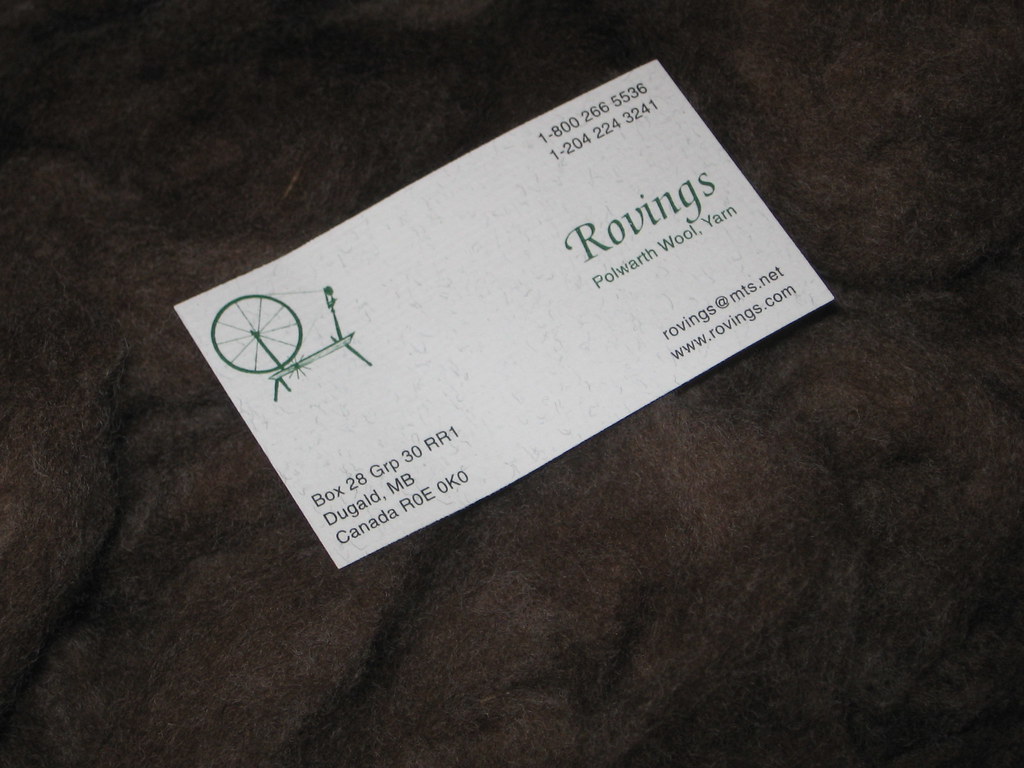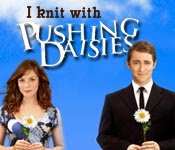fAnne Hanson, of knitspot fame, has patterns that she calls Little Nothings. They are patterns for perfect small projects which usually don't require much yarn. I decided to do my own little nothing the other day. (Though of course I don't have her design skills and used someone else's pattern.)
Yarn: 1 oz of handspun 50/50 yak and silk (yummmmmmm) from Trading Post Fibers
Pattern: Abby from Knittyspin
Dates: spinning = one day in July 09, plying = 12/17, knitting = 12/18 - 12/20
Modifications: Lots! First off, I didn't use a silk single. Next, I only cast on 90 stitches. Finally, I only knit about 4-5 inches of cowl because I ran out of yarn (I knew I would).
This yarn is simply luxurious. I mean, yak and silk? What could be better? It is light, airy, shimmery and WARM. I did a worsted style spinning 2-ply yarn which ended up being a light fingering weight. The singles for this yarn was spun back in July for my challenge day during Tour de Fleece. But I never got around plying the singles and they took up one of my bobbins.
My friend, Victoria, does a lot of work with horses which means she is outdoors most of the winter. I thought this yarn would make a perfect pair of wristers to help her hands stay warm. When I plied up the yarn, however, I realized that I wouldn't have much and the wristers wouldn't be very long. I decided that a cowl, even a short one, would probably be better. I had previously made Abby with some laceweight alpaca so the pattern popped into my mind as a possibility. It is an extremely easy pattern to memorize so I could knit it without thinking.
I cast on 90 stitches so the cowl would be close to the neck and knit until my yarn ran short. In fact, it ran too short and I ran out of yarn before the bind off. So I did what any enterprising spinner/knitter would do, spun up some more, plied it and knit the bind off. I love drop spindles. The additional fiber I used wasn't actually yak/silk because I didn't have any more left. It was merino/silk instead and was much more white than the soft cream of the yak/silk. I don't think that really mattered because there was a slight curl to the ends of the cowl. That meant the cast on and bind off edges were both hidden.
I was able to finish everything up on Sunday morning and quickly ran over to another friend's house to drop off the gift to Victoria. Yay for quick gifts!
Tuesday, December 22, 2009
Friday, December 11, 2009
Stained glass cookies
Apparently I've decided to do every other craft than holiday knitting or spinning this week. On Sunday and Monday morning, I made stained glass cookies.
Aren't they fun? And they are actually really easy to do. I swear!
You use any sort of sugar cookie recipe, cut out a shape in the middle (we have lots of mini cookie cutters), fill in that with crushed clear candy, and cook the cookie like normal. I used my family's sugar cookie recipe we've always used for cookie parties. It was kind of hard to scale the recipe back for only a few dozen rather than 50! I used crushed Jolly Rancher for the centers.
Felted soap
Once again, more crafts other than knitting or spinning. Enjoy!
On Thursday night, a friend and I had craft night at her house. At our last knitting meeting, someone mentioned felting soap because we were felting some knitted projects in the sink at our meeting place. Jane and I decided to felt some bars. Jane wanted to make them for Christmas presents and I wanted to make one for a Secret Santa exchange at work. Oh, I confess, I really just wanted to play with another craft!
It was so much fun to play with the different colors and different techniques. Both of us did some research and had watched different youtube videos and read tutorials (can you tell both of us are reference librarians?). I found the method that worked best for me was taking 2-3 inch pieces of fiber and putting them cross-ways all over the place. Then I put that in a nylon hose, dipped it in warm water, mushed it between my hands, and, once it had felted well, dunked it in cold water. The best bars of felted soap were the ones that are palm-sized or circular. The rectangular bars worked ok but didn't seem to have their corners felt as well.
The bar that is blue, I added a moon design on one side and a sun and cloud on the other side. (Shut up, it really is a sun. Not an egg with a runny yolk.) I'm going to give this one to my secret santa recipient at work.
In other news, I made more terrariums. Why, yes, I am obsessed. Why do you ask?
On Thursday night, a friend and I had craft night at her house. At our last knitting meeting, someone mentioned felting soap because we were felting some knitted projects in the sink at our meeting place. Jane and I decided to felt some bars. Jane wanted to make them for Christmas presents and I wanted to make one for a Secret Santa exchange at work. Oh, I confess, I really just wanted to play with another craft!
It was so much fun to play with the different colors and different techniques. Both of us did some research and had watched different youtube videos and read tutorials (can you tell both of us are reference librarians?). I found the method that worked best for me was taking 2-3 inch pieces of fiber and putting them cross-ways all over the place. Then I put that in a nylon hose, dipped it in warm water, mushed it between my hands, and, once it had felted well, dunked it in cold water. The best bars of felted soap were the ones that are palm-sized or circular. The rectangular bars worked ok but didn't seem to have their corners felt as well.
The bar that is blue, I added a moon design on one side and a sun and cloud on the other side. (Shut up, it really is a sun. Not an egg with a runny yolk.) I'm going to give this one to my secret santa recipient at work.
In other news, I made more terrariums. Why, yes, I am obsessed. Why do you ask?
Thursday, December 10, 2009
Terrarium love
I saw this project on the Design*Sponge blog yesterday and just knew I had to make one. I ran out at lunch today and bought the supplies.
Supplies:
Clear ornament
sheet moss
fake butterfly
mini mushroom birds (haven't made an ornament using these yet)
All you have to do is wet the moss a little, shove it in the ornament, squish the butterfly as small as it will go, and shove it in the ornament. Are you sensing a theme here? These fake butterflies are made from feathers and, with the moisture in the moss, their scrunched wings will smooth out in a little bit of time. A q-tip run around the inside of the globe will get a lot of moisture out and remove the stray bits of moss.
I'm in love with these little globes! So cute! There are definitely more of these in my future. So cute!
Tuesday, December 01, 2009
November = start lots of sweaters. . .
. . . and finish none of them. I've failed miserably at the whole NaKniSweMo thing this month. I ended up starting 2 different sweaters, digging 2 out of the WIP pile and finishing none of them. I could have probably finished a couple of them if they were the only projects on which I was working but of course they weren't! Sorry for no pictures of the various sweaters. I've put my camera somewhere and haven't found it yet. I give you pictures of yarn instead!
First up is my Bohus-ish sweater that I started the last morning at SOAR. The pattern's name is Bountiful Bohus. I call this a Bohus-ish because it is knit using worsted weight yarn rather than fingering weight like the true Bohus sweaters. If it were out of fingering, I probably never would finish it! The body of the sweater is a dark brown with a reddish brown and white yoke.
It is my first skeeked sweater so that should be fun/nerve wracking to do. I should try to push through and finish it to the point where I cut down the middle so I can do that at knitting group. Doesn't that seem like something you should do with morale support around you? Right now, I've stalled out at the sleeves. I'm doing 2 at a time so that isn't the problem. The problem was a) I didn't like the sleeves in the pattern so I changed things and b) I needed a project during the holidays that I could just knit and not have to worry about doing increases. So the Bohus-ish has been huddled in the corner for the last couple of weeks looking lonely.
The next sweater I cast on was my own version of the Perfect Sweater. Of course I had to change the pattern. I had some DK weight yarn that has been marinating in the stash since I was in England in 2007. I love the yarn but hadn't found the pattern for it.
Well, I cast on for this sweater after doing a little bit of conversion for my yarn difference. When I say conversion, I mean squinting at the pattern then my swatch and saying, "Eh, I'll just make a size or two larger." As you can tell, it is a very scientific approach. And it definitely won't ever come back to bite my in the butt. Nope. Never. Anyway, I'm knitting the front and the back of the v-neck sweater at the same time. Or will be knitting them together until the decreases for the front start. I've done the decreasing for the waist and now need to start the increasing for the bust. That means, however, that you have to pay attention. That's a little hard to do with the bustle of the holidays and going out with friends to the bar. So once again, I need another project that is simple.
The third sweater graced by my knitter's ADD is the Soap Bubble Wrap(rav link) which has been lurking in my WIP basket/corner of shame for a while now. I LOVED the sweater instantly when it was released by Knitting Daily. I love it so much that I rushed over to KnitPicks and ordered some Cotlin in a very nice green color. I got stalled, however, once the patterning began. Now, those of you who have looked at the pattern will notice that starts on the 3rd row. Yeah, that's right. I got 3 rows into a sweater and stopped. So I picked the project up again and took a look at why I stopped. For some reason, I couldn't figure out the pattern and kept ending up with extra stitches and then fewer stitches. What makes it even worse is that I made a wedding shawl for a friend in this pattern so I know how to do it. Let's just say that the wrap is still in time out.
The fourth and final sweater is one on which I am actually making progress. (Of course, now that I've said that, I'll stall out!) I started the Featherweight Cardigan(rav link) a while ago, too, and can't remember why I stopped working on it for the life of me. It is a cardigan knit out of laceweight yarn (mmmm, malabrigo) from the top down using raglan increases. I had finished the increases and started on the sleeves. The pattern has you finish the body first but I wanted everything to be finished when I was done. Does that make sense? Well, I seem to have stopped because I was in the middle of the sleeve decreases for the second sleeve. Again, I didn't want to keep track of rows or count so I put it down then. Thank goodness I can read my knitting fairly well. Anyway, I didn't want to mess with the decreases so I put the sleeve on a stitch holder and started on the body again.
Can I just tell you how much I love this sweater? The yarn is fabulously soft and I love the emerald green color. It's such a nice and light sweater. Since last Wednesday, I've knit 10 inches on the body. The pattern calls for a 10 inch body but I didn't really want a cropped sweater. I have plenty of yarn so I'm going to keep going. Because the body is stockinette, I don't have to worry about paying attention to it at all in company. And, because it is knit flat and not in the round, I've had a chance to practice my knitting backward a whole lot. I'm to the point that I'm only a tiny bit slower knitting backwards than knitting normally. Keep your fingers crossed that I don't stall out on this one!
First up is my Bohus-ish sweater that I started the last morning at SOAR. The pattern's name is Bountiful Bohus. I call this a Bohus-ish because it is knit using worsted weight yarn rather than fingering weight like the true Bohus sweaters. If it were out of fingering, I probably never would finish it! The body of the sweater is a dark brown with a reddish brown and white yoke.
It is my first skeeked sweater so that should be fun/nerve wracking to do. I should try to push through and finish it to the point where I cut down the middle so I can do that at knitting group. Doesn't that seem like something you should do with morale support around you? Right now, I've stalled out at the sleeves. I'm doing 2 at a time so that isn't the problem. The problem was a) I didn't like the sleeves in the pattern so I changed things and b) I needed a project during the holidays that I could just knit and not have to worry about doing increases. So the Bohus-ish has been huddled in the corner for the last couple of weeks looking lonely.
The next sweater I cast on was my own version of the Perfect Sweater. Of course I had to change the pattern. I had some DK weight yarn that has been marinating in the stash since I was in England in 2007. I love the yarn but hadn't found the pattern for it.
Well, I cast on for this sweater after doing a little bit of conversion for my yarn difference. When I say conversion, I mean squinting at the pattern then my swatch and saying, "Eh, I'll just make a size or two larger." As you can tell, it is a very scientific approach. And it definitely won't ever come back to bite my in the butt. Nope. Never. Anyway, I'm knitting the front and the back of the v-neck sweater at the same time. Or will be knitting them together until the decreases for the front start. I've done the decreasing for the waist and now need to start the increasing for the bust. That means, however, that you have to pay attention. That's a little hard to do with the bustle of the holidays and going out with friends to the bar. So once again, I need another project that is simple.
The third sweater graced by my knitter's ADD is the Soap Bubble Wrap(rav link) which has been lurking in my WIP basket/corner of shame for a while now. I LOVED the sweater instantly when it was released by Knitting Daily. I love it so much that I rushed over to KnitPicks and ordered some Cotlin in a very nice green color. I got stalled, however, once the patterning began. Now, those of you who have looked at the pattern will notice that starts on the 3rd row. Yeah, that's right. I got 3 rows into a sweater and stopped. So I picked the project up again and took a look at why I stopped. For some reason, I couldn't figure out the pattern and kept ending up with extra stitches and then fewer stitches. What makes it even worse is that I made a wedding shawl for a friend in this pattern so I know how to do it. Let's just say that the wrap is still in time out.
The fourth and final sweater is one on which I am actually making progress. (Of course, now that I've said that, I'll stall out!) I started the Featherweight Cardigan(rav link) a while ago, too, and can't remember why I stopped working on it for the life of me. It is a cardigan knit out of laceweight yarn (mmmm, malabrigo) from the top down using raglan increases. I had finished the increases and started on the sleeves. The pattern has you finish the body first but I wanted everything to be finished when I was done. Does that make sense? Well, I seem to have stopped because I was in the middle of the sleeve decreases for the second sleeve. Again, I didn't want to keep track of rows or count so I put it down then. Thank goodness I can read my knitting fairly well. Anyway, I didn't want to mess with the decreases so I put the sleeve on a stitch holder and started on the body again.
Can I just tell you how much I love this sweater? The yarn is fabulously soft and I love the emerald green color. It's such a nice and light sweater. Since last Wednesday, I've knit 10 inches on the body. The pattern calls for a 10 inch body but I didn't really want a cropped sweater. I have plenty of yarn so I'm going to keep going. Because the body is stockinette, I don't have to worry about paying attention to it at all in company. And, because it is knit flat and not in the round, I've had a chance to practice my knitting backward a whole lot. I'm to the point that I'm only a tiny bit slower knitting backwards than knitting normally. Keep your fingers crossed that I don't stall out on this one!
Friday, November 27, 2009
SOAR, Sunday and Monday
Sunday, November 1, tasks for the day: pack, attend a short lecture, and begin flying home with fall over to Monday, November 2
Sunday was the final day of SOAR as well as the day of the time change. Thanks to the time change and the jet lag, I woke up around 4 am and could not get back to sleep at all. I ended up using the time well by using it to pack and cast on for a new sweater. November is NaKniSweMo or National Knit a Sweater Month to correspond with NaNoWriMo or National Novel Writing Month. In my effort for this month, I've started a bohus inspired cardigan which involves a very long steek down the middle. I'm slightly nervous about that one. The body is all stockinette but I've kind of stalled out on it due to an issue with the sleeves.
Many people had already left on an early flight so breakfast was an even smaller affair than normal. After that, I returned to the room to finish packing. I had shoved all of my clothes into the small backpack that zips onto the front of the suitcase. The suitcase was left open for the ~3 pounds of fiber and bags of sample fiber we got in class and in the goodie bag. My roommate helped me squash all of the air out of the various bags of fiber and we quickly zipped up the suitcase. I swear, if a TSA agent had to open my bag, someone would have lost an eye. My bag was under that much pressure.
I did shove some of the fiber in my spinning wheel carry-on to act as padding for my wheel. I also put my pashmina wrap and pajama bottoms in there for my red-eye flight from San Fransisco to Philadelphia. I was not going to be stuck on the airplane all night without having PJs! :)
There was an interesting talk about taking spinning wheels to Africa and how people are using knitting to raise money. The lady who was giving the talk had some very nice pictures and lovely stories. I wish I hadn't missed half of it, though. I, for some reason, thought that the talk began at 9:30 and not 9. Oh, well!
After the talk, I finished packing everything and checking out. My roommate and I (the other left on the early morning flight) went back over to the Great Hall for lunch and general hanging out. There were only a handful of us at lunch, I think less than 12. We all took our time over the meal because all of us were leaving on the 4:30 or 5:30 shuttles that evening. Some of us stayed in the Great Hall for a couple of hours, knitting and spinning away. Thankfully knitters and spinners are always occupied! We were able to watch some of the Columbia people set-up for their conference which is how we figured out there was going to be a fashion show in the silk room. From there we moved on to the main lodge to find more seating area which we could colonize. We ended up hanging out with some other spinners who had taken over the lobby. It was a lot of fun to talk about what we learned and who we met at SOAR.
Four of us were on the flight to San Fransisco that evening so we were able to continue the experience a little longer. This might be funny to you but it was really nice to be able to have someone else watch your bags while you ran into the restroom or got food. That is definitely a hassle of traveling alone!
At San Fransisco, we parted ways and I ran (ish) to catch my plane in another terminal. Did you know that, once you leave one terminal to go to another, you have to go back through security? I have to say that I hate that with a passion? Of course my spinning wheel caught the screener's attention so my bag got flagged for a more thorough search. I believe that is when tragedy (ish) struck. The security guard checked through everything and my spindles got moved around. I didn't have time to repack and shift everything back because I wanted to grab dinner before getting on the plane. (Sidenote: Best portabello mushroom sandwich EVER! It was some of the best airport food I've had. Though, it could be because I was just so hungry.) I changed into my PJs and was ready for my red-eye flight. The only problem was that I had to gate-check my bag.
Now, I wasn't too worried about gate-checking because your bag normally meets you at the next gate and you can carry it with you for the next part of your flight. My wheel was so well packed with fiber, yarn and PJs that not that much would shift around with normal gate-checking. This time, however, they were checking the bags through to your final destination. That means picking it up at baggage claim which means they aren't as careful with your bags. Are you starting to get the idea? (Don't worry, it wasn't my wheel that got damaged!) The red-eye was actually nice because there wasn't a person in the middle seat so the guy on the aisle and I could kind of stretch out. My red-eye flew into Philadelphia and then I hopped on a plane to Columbus. After picking my car up in the long-term parking lot, I was headed home!
I ended up going to the barn before heading home because my horse had missed me over the weekend. Apparently, the people at the barn thought he was sick because he was acting so depressed. It took one of them telling Java that I hadn't left for good to get him to start eating again. I told him that I was going out of town but I should have told him when I was coming back. Poor guy thought I had deserted him!
Once home, I started showing Mom all of my purchases and telling her all about SOAR. I showed her my turkish spindle and she asked, "Is the shaft supposed to be bent like that?" Noooooo! I am willing to bet that my spindle got pinched between parts of my wheel in the suitcase and then got broken in the baggage handling. I didn't even have a chance to spin on it! I'm going to have to contact Carolina Homespun to see if they have replacement shafts or if they can contact the maker and have him make me one. Le sigh!
OK, now that I'm finally caught up with SOAR (only a month late) I can update you on everything else in another post!
Sunday was the final day of SOAR as well as the day of the time change. Thanks to the time change and the jet lag, I woke up around 4 am and could not get back to sleep at all. I ended up using the time well by using it to pack and cast on for a new sweater. November is NaKniSweMo or National Knit a Sweater Month to correspond with NaNoWriMo or National Novel Writing Month. In my effort for this month, I've started a bohus inspired cardigan which involves a very long steek down the middle. I'm slightly nervous about that one. The body is all stockinette but I've kind of stalled out on it due to an issue with the sleeves.
Many people had already left on an early flight so breakfast was an even smaller affair than normal. After that, I returned to the room to finish packing. I had shoved all of my clothes into the small backpack that zips onto the front of the suitcase. The suitcase was left open for the ~3 pounds of fiber and bags of sample fiber we got in class and in the goodie bag. My roommate helped me squash all of the air out of the various bags of fiber and we quickly zipped up the suitcase. I swear, if a TSA agent had to open my bag, someone would have lost an eye. My bag was under that much pressure.
I did shove some of the fiber in my spinning wheel carry-on to act as padding for my wheel. I also put my pashmina wrap and pajama bottoms in there for my red-eye flight from San Fransisco to Philadelphia. I was not going to be stuck on the airplane all night without having PJs! :)
There was an interesting talk about taking spinning wheels to Africa and how people are using knitting to raise money. The lady who was giving the talk had some very nice pictures and lovely stories. I wish I hadn't missed half of it, though. I, for some reason, thought that the talk began at 9:30 and not 9. Oh, well!
After the talk, I finished packing everything and checking out. My roommate and I (the other left on the early morning flight) went back over to the Great Hall for lunch and general hanging out. There were only a handful of us at lunch, I think less than 12. We all took our time over the meal because all of us were leaving on the 4:30 or 5:30 shuttles that evening. Some of us stayed in the Great Hall for a couple of hours, knitting and spinning away. Thankfully knitters and spinners are always occupied! We were able to watch some of the Columbia people set-up for their conference which is how we figured out there was going to be a fashion show in the silk room. From there we moved on to the main lodge to find more seating area which we could colonize. We ended up hanging out with some other spinners who had taken over the lobby. It was a lot of fun to talk about what we learned and who we met at SOAR.
Four of us were on the flight to San Fransisco that evening so we were able to continue the experience a little longer. This might be funny to you but it was really nice to be able to have someone else watch your bags while you ran into the restroom or got food. That is definitely a hassle of traveling alone!
spot the wheels!
At San Fransisco, we parted ways and I ran (ish) to catch my plane in another terminal. Did you know that, once you leave one terminal to go to another, you have to go back through security? I have to say that I hate that with a passion? Of course my spinning wheel caught the screener's attention so my bag got flagged for a more thorough search. I believe that is when tragedy (ish) struck. The security guard checked through everything and my spindles got moved around. I didn't have time to repack and shift everything back because I wanted to grab dinner before getting on the plane. (Sidenote: Best portabello mushroom sandwich EVER! It was some of the best airport food I've had. Though, it could be because I was just so hungry.) I changed into my PJs and was ready for my red-eye flight. The only problem was that I had to gate-check my bag.
Now, I wasn't too worried about gate-checking because your bag normally meets you at the next gate and you can carry it with you for the next part of your flight. My wheel was so well packed with fiber, yarn and PJs that not that much would shift around with normal gate-checking. This time, however, they were checking the bags through to your final destination. That means picking it up at baggage claim which means they aren't as careful with your bags. Are you starting to get the idea? (Don't worry, it wasn't my wheel that got damaged!) The red-eye was actually nice because there wasn't a person in the middle seat so the guy on the aisle and I could kind of stretch out. My red-eye flew into Philadelphia and then I hopped on a plane to Columbus. After picking my car up in the long-term parking lot, I was headed home!
I ended up going to the barn before heading home because my horse had missed me over the weekend. Apparently, the people at the barn thought he was sick because he was acting so depressed. It took one of them telling Java that I hadn't left for good to get him to start eating again. I told him that I was going out of town but I should have told him when I was coming back. Poor guy thought I had deserted him!
Once home, I started showing Mom all of my purchases and telling her all about SOAR. I showed her my turkish spindle and she asked, "Is the shaft supposed to be bent like that?" Noooooo! I am willing to bet that my spindle got pinched between parts of my wheel in the suitcase and then got broken in the baggage handling. I didn't even have a chance to spin on it! I'm going to have to contact Carolina Homespun to see if they have replacement shafts or if they can contact the maker and have him make me one. Le sigh!
OK, now that I'm finally caught up with SOAR (only a month late) I can update you on everything else in another post!
Monday, November 23, 2009
SOAR, Saturday
Wow, I've really gotten behind. Sorry, guys! Life has been getting in the way and I keep putting my notes in a "safe" place aka somewhere under all sorts of stuff.
Saturday, October 31 (Halloween!), tasks for the day: 2 retreat sessions, marketplace (I know, I know), and spin-in party
Happy Halloween! On Saturday, I once again got up super early (surprise, surprise!) and went off to breakfast. From there I moved on to my sock class. I love knitting socks so taking a class on spinning for them made perfect sense! The class was appropriately called Spinning for Socks and was taught by Janel Laidman. Many of us arrived early and got our wheels set up. We were greeted by a wonderful sight in the middle of the room.
I decided that I would set my wheel up for plying only and spin my singles on my various drop spindles. See, this is the advantage of having *cough* many drop spindles. When we got ready for plying, I wound my singles off onto a paper tube or left them on the spindle and put them in empty water glasses so they wouldn't go spinning across the room. Mostly my system worked well except when the paper tube flew out and would bounce all around under my chair.
Janel had everyone go around the room and say who they were, where we were from and how long we've been spinning. It was so interesting to hear about the different ladies' stories. Some of them had been coming to SOAR since the very first one! It was neat to hear how spinning has changed since they first started spinning. They recounted stories about being snowed in and other craziness. Times like that were my favorite part of SOAR. Talking with people and listening to their stories was just so interesting!
Janel recommended BFL for its softness and durability. Most of the fibers we used in the class were BFL, actually. She recommended, if you are using a fine wool, blend it with something like nylon, tencel or bamboo to make the fine wool stronger. To get a strong, dense yarn, you should use a worsted spinning technique. Woolen spinning would give you a lofty, warm yarn but it wouldn't be as durable. Janel also recommended using 3 or more plies for your sock yarn. Her reason for this is, with more plies, more surface area is hidden within the yarn. With more surface area hidden, there is less chance for the yarn to abrade and make holes. It also makes the yarn stronger the more plies there are. My "lovely" picture shows a 3-ply yarn and those itsy-bitsy red scrawls are the parts of the surface area hidden by the ply. (Hey, it's really hard to draw on Google docs with your mouse!)

Janel recommended having a twist angle of 45 degrees for sock yarn. Now, I'm not that technical of a spinner. If you are interested in learning more about twist angel, she told us to check out the Essentials of Yarn Design by Mabel Ross. It has a diagram in it that helps you figure out what twist angle you have put into your yarn. We also talked about twists per inch, another way of describing twist angle. Janel had us spin our singles in different colors so we could easily see how many twists we have per inch. They definitely had a barber pole effect! Twists per inch helped us a lot in our plying.
For plying, Janel told us a simple formula.
In other words, the more plies you have, the more twists per inch you should have. One liberating thing Janel told us is that your plied yarn doesn't have to hang perfectly straight (i.e. a perfectly balanced yarn) to make a good sock yarn. As long as your yarn is finished correctly (washed and dried without a weight hanging on it), your twist will be set. If you want a yarn that is lofty and soft, she recommened using fewer plies. But if you want a hard wearing and strong yarn, you should err on the side of caution and put in more plying twists per inch. In fact, she said you can sometimes go up to 1 1/2 times the spinning twist. I always have felt like I put too much twist in but that is apparently not the case! It was easy to see with all of the different colors of the singles. One of mine was red, another brown, the third an orange/yellow, and the 4th a yellow/green. It was definitely an interesting mix.
We practiced doing a 3 ply and a cabled 4 ply yarn. The cabling was very helpful. The idea behind cabling is you spin 4 singles all the same direction. Then you ply 2 together and 2 together so you have 2 2-ply yarns. So you've started with yarns that were all spun clockwise and now have plied them counter-clockwise. (Confused yet?) Then you take those 2 2-plies and you ply them together the original direction (i.e. clockwise) to get your cabled yarn. Janel described it as having the bumps of the plies looking like a string of pearls. I've cabled a yarn before but wasn't sure if I was doing it the right way. I think the yarn I did before had too few twists per inch as I was plying it.
My final retreat session was probably my most entertaining one. I took the Silk Work Sampler with Michael Cook and it was really fun. I took the class because I figured that it wasn't something I could find at home. I might be able to take other spinning classes but probably wouldn't come across someone as knowledgeable about silk as Michael.
First off, let me tell you how bad his room smelled. After a week of cooking silk cocoons, it was definitely pungent! :) Columbia Sportswear was coming into the resort as we were leaving and setting up a runway in Michael's room. They must have wondered what in the world those crazy spinners were doing!
Michael taught us how to reel silk first. He had been simmering the silk cocoons for about an hour or so until all of them were softened up. We used a scrubby brush like the kind you use on really stubborn dishes to find the ends of the silk cocoons. Basically we pummeled the tops of the cocoons and then pulled the brush up. All of these really fine strands were hanging on to the end of the brush. We then threaded those filaments on to the silk reeler and were able to start reeling silk.
Michael had us do 50-70 arm lengths of silk. He warned us that it wouldn't seem like much but, once we started adding twist to it, we would feel like the silk went on forever. Let me tell you how true that was!
After our 50-70 arm lengths were measured out, everyone wrapped their silk onto these bobbins (or were they spools?) that Michael had brought. They are very similar to the traditional Chinese tools used for this purpose. They help the silk not tangle as you are spinning it and helps it dry.
Then we raced to spin up some of our silk. Why was it a race? Because we had to put our silk in a degumming bath for 45 minutes in order for it to turn into really nice silk. We were coming up to the 45 minute mark so everyone's spindles or wheels were flying! My partner and I both got a good amount spun up but we still had more on our spools. We both decided to have before and after degumming samples just because we knew we couldn't get everything finished and still make the 45 minute cut-off. The differences between the two samples are amazing! The before is stiff, wirey and yellow-ish. The after, however, is a blinding white that is super soft and silkly (duh, it is silky, right?). I'm kind of glad that I have both samples to show people.
What did we do for the next 45 minutes you might ask. Well, we learned how to make silk hankies. Silk hankies are layers of silk cocoons stretched out over frames to make them into squares. If you want to play with silk, I would highly recommend making hankies. I actually taught our spinning guild how to do this at our next meeting. Thankfully, where we meet has a sink and stove so it was very easy. Anyway, back to making hankies at SOAR.
Go to Michael's website and he has a very good photo tutorial about the process. First, you simmer the cocoons in a degumming solution to loosen them up. Then you tease one of the ends open and dump out the silk worm and its poo (it's a glamorous project, let me tell you). Next, you dunk the cocoon in a bowl (or cup) of water and work it between your fingers. It is almost like a white egg yolk will come off of the cocoon. Once you no longer have the white yolk coming off, you start stretching the cocoon like a pizza crust. It will amaze you how far it can stretch. Michael had us stretch between 5 and 10 cocoons onto square frames. After we were finished stretching, we rinsed them in clear water then an acidic rinse (water and vinegar). In class at SOAR, we followed that up with a fabric softener rinse to make it easier to spin the silk later so it wouldn't catch as much on your hands. Michael recommend that you skip that step if you wanted to dye the hankie latter. In my mini-workshop at my spinning group, I didn't have them do the fabric softener because a) they might want to dye them later and b) my family doesn't use fabric softener so I would have had to buy some. After you are finished with the rinsing, you take the hankies off of the frame and squeeze out the water. It was so much fun! I'm really happy that I took Michael's class because I learned so much.
After things were finished in class and we got our newly degummed silk skeins, my partner and I headed back to the marketplace (I know, I know, how many trips was that?). But it was my last chance of the weekend! Anyway, I still wanted to pick some things while I didn't have to pay for shipping. I bought 12 weaving bobbins that I could use for plying. I've already put a number of them to use so they've been really helpful. I also broke down and got some more fiber. It is a fantastic wool (why can't I find my notes about sheep breed?) that reminds me of mixed berries. It's totally outside of my color range but I love it!
I also broke down and bought a Turkish spindle from Carolina Homespun. I've never used a Turkish spindle so I was really interested in learning how to use it. More about that later.
After leaving the marketplace for the last time, I ran back to the room to change into my costume, a giant Reese's package. We all went to dinner and then hung around for the spin-in. The spin-in was a little surreal. They had a karaoke machine but the guys who were running it seemed to think all of us would like big band era music. I guess they thought spinners would be a whole bunch of grandmas. Hardly anyone got up to sing until the alcohol started flowing. Then the music being sung was much better. My group and I moved into the lobby area where it was a little quieter and we could have a chance to visit.
I wish I had taken pictures of some people's costumes. My favorite was Denny's because she was dressed as a torch bearer for the Winter Olympics. She had a Toronto Olympics shirt on and was holding a spindle with some fire-y fiber attached to the top. It was fabulous! You could tell where she was in the building by the random bursts of the Olympic theme.
I crashed around 11pm and went back to the room, not quite ready for the next day when everyone would go home.
Saturday, October 31 (Halloween!), tasks for the day: 2 retreat sessions, marketplace (I know, I know), and spin-in party
Happy Halloween! On Saturday, I once again got up super early (surprise, surprise!) and went off to breakfast. From there I moved on to my sock class. I love knitting socks so taking a class on spinning for them made perfect sense! The class was appropriately called Spinning for Socks and was taught by Janel Laidman. Many of us arrived early and got our wheels set up. We were greeted by a wonderful sight in the middle of the room.
I decided that I would set my wheel up for plying only and spin my singles on my various drop spindles. See, this is the advantage of having *cough* many drop spindles. When we got ready for plying, I wound my singles off onto a paper tube or left them on the spindle and put them in empty water glasses so they wouldn't go spinning across the room. Mostly my system worked well except when the paper tube flew out and would bounce all around under my chair.
Janel had everyone go around the room and say who they were, where we were from and how long we've been spinning. It was so interesting to hear about the different ladies' stories. Some of them had been coming to SOAR since the very first one! It was neat to hear how spinning has changed since they first started spinning. They recounted stories about being snowed in and other craziness. Times like that were my favorite part of SOAR. Talking with people and listening to their stories was just so interesting!
Janel recommended BFL for its softness and durability. Most of the fibers we used in the class were BFL, actually. She recommended, if you are using a fine wool, blend it with something like nylon, tencel or bamboo to make the fine wool stronger. To get a strong, dense yarn, you should use a worsted spinning technique. Woolen spinning would give you a lofty, warm yarn but it wouldn't be as durable. Janel also recommended using 3 or more plies for your sock yarn. Her reason for this is, with more plies, more surface area is hidden within the yarn. With more surface area hidden, there is less chance for the yarn to abrade and make holes. It also makes the yarn stronger the more plies there are. My "lovely" picture shows a 3-ply yarn and those itsy-bitsy red scrawls are the parts of the surface area hidden by the ply. (Hey, it's really hard to draw on Google docs with your mouse!)
Janel recommended having a twist angle of 45 degrees for sock yarn. Now, I'm not that technical of a spinner. If you are interested in learning more about twist angel, she told us to check out the Essentials of Yarn Design by Mabel Ross. It has a diagram in it that helps you figure out what twist angle you have put into your yarn. We also talked about twists per inch, another way of describing twist angle. Janel had us spin our singles in different colors so we could easily see how many twists we have per inch. They definitely had a barber pole effect! Twists per inch helped us a lot in our plying.
For plying, Janel told us a simple formula.
For a 2 ply, you want your ply twists to equal 2/3 of your spin twists per inch.
For a 3 ply, you want your ply twists to equal 3/4 of your spin twists per inch.
For a 4 ply, you want your ply twists to equal 4/5 of your spin twists per inch.
In other words, the more plies you have, the more twists per inch you should have. One liberating thing Janel told us is that your plied yarn doesn't have to hang perfectly straight (i.e. a perfectly balanced yarn) to make a good sock yarn. As long as your yarn is finished correctly (washed and dried without a weight hanging on it), your twist will be set. If you want a yarn that is lofty and soft, she recommened using fewer plies. But if you want a hard wearing and strong yarn, you should err on the side of caution and put in more plying twists per inch. In fact, she said you can sometimes go up to 1 1/2 times the spinning twist. I always have felt like I put too much twist in but that is apparently not the case! It was easy to see with all of the different colors of the singles. One of mine was red, another brown, the third an orange/yellow, and the 4th a yellow/green. It was definitely an interesting mix.
We practiced doing a 3 ply and a cabled 4 ply yarn. The cabling was very helpful. The idea behind cabling is you spin 4 singles all the same direction. Then you ply 2 together and 2 together so you have 2 2-ply yarns. So you've started with yarns that were all spun clockwise and now have plied them counter-clockwise. (Confused yet?) Then you take those 2 2-plies and you ply them together the original direction (i.e. clockwise) to get your cabled yarn. Janel described it as having the bumps of the plies looking like a string of pearls. I've cabled a yarn before but wasn't sure if I was doing it the right way. I think the yarn I did before had too few twists per inch as I was plying it.
My final retreat session was probably my most entertaining one. I took the Silk Work Sampler with Michael Cook and it was really fun. I took the class because I figured that it wasn't something I could find at home. I might be able to take other spinning classes but probably wouldn't come across someone as knowledgeable about silk as Michael.
First off, let me tell you how bad his room smelled. After a week of cooking silk cocoons, it was definitely pungent! :) Columbia Sportswear was coming into the resort as we were leaving and setting up a runway in Michael's room. They must have wondered what in the world those crazy spinners were doing!
Michael taught us how to reel silk first. He had been simmering the silk cocoons for about an hour or so until all of them were softened up. We used a scrubby brush like the kind you use on really stubborn dishes to find the ends of the silk cocoons. Basically we pummeled the tops of the cocoons and then pulled the brush up. All of these really fine strands were hanging on to the end of the brush. We then threaded those filaments on to the silk reeler and were able to start reeling silk.
Michael had us do 50-70 arm lengths of silk. He warned us that it wouldn't seem like much but, once we started adding twist to it, we would feel like the silk went on forever. Let me tell you how true that was!
After our 50-70 arm lengths were measured out, everyone wrapped their silk onto these bobbins (or were they spools?) that Michael had brought. They are very similar to the traditional Chinese tools used for this purpose. They help the silk not tangle as you are spinning it and helps it dry.
Then we raced to spin up some of our silk. Why was it a race? Because we had to put our silk in a degumming bath for 45 minutes in order for it to turn into really nice silk. We were coming up to the 45 minute mark so everyone's spindles or wheels were flying! My partner and I both got a good amount spun up but we still had more on our spools. We both decided to have before and after degumming samples just because we knew we couldn't get everything finished and still make the 45 minute cut-off. The differences between the two samples are amazing! The before is stiff, wirey and yellow-ish. The after, however, is a blinding white that is super soft and silkly (duh, it is silky, right?). I'm kind of glad that I have both samples to show people.
What did we do for the next 45 minutes you might ask. Well, we learned how to make silk hankies. Silk hankies are layers of silk cocoons stretched out over frames to make them into squares. If you want to play with silk, I would highly recommend making hankies. I actually taught our spinning guild how to do this at our next meeting. Thankfully, where we meet has a sink and stove so it was very easy. Anyway, back to making hankies at SOAR.
Go to Michael's website and he has a very good photo tutorial about the process. First, you simmer the cocoons in a degumming solution to loosen them up. Then you tease one of the ends open and dump out the silk worm and its poo (it's a glamorous project, let me tell you). Next, you dunk the cocoon in a bowl (or cup) of water and work it between your fingers. It is almost like a white egg yolk will come off of the cocoon. Once you no longer have the white yolk coming off, you start stretching the cocoon like a pizza crust. It will amaze you how far it can stretch. Michael had us stretch between 5 and 10 cocoons onto square frames. After we were finished stretching, we rinsed them in clear water then an acidic rinse (water and vinegar). In class at SOAR, we followed that up with a fabric softener rinse to make it easier to spin the silk later so it wouldn't catch as much on your hands. Michael recommend that you skip that step if you wanted to dye the hankie latter. In my mini-workshop at my spinning group, I didn't have them do the fabric softener because a) they might want to dye them later and b) my family doesn't use fabric softener so I would have had to buy some. After you are finished with the rinsing, you take the hankies off of the frame and squeeze out the water. It was so much fun! I'm really happy that I took Michael's class because I learned so much.
After things were finished in class and we got our newly degummed silk skeins, my partner and I headed back to the marketplace (I know, I know, how many trips was that?). But it was my last chance of the weekend! Anyway, I still wanted to pick some things while I didn't have to pay for shipping. I bought 12 weaving bobbins that I could use for plying. I've already put a number of them to use so they've been really helpful. I also broke down and got some more fiber. It is a fantastic wool (why can't I find my notes about sheep breed?) that reminds me of mixed berries. It's totally outside of my color range but I love it!
I also broke down and bought a Turkish spindle from Carolina Homespun. I've never used a Turkish spindle so I was really interested in learning how to use it. More about that later.
After leaving the marketplace for the last time, I ran back to the room to change into my costume, a giant Reese's package. We all went to dinner and then hung around for the spin-in. The spin-in was a little surreal. They had a karaoke machine but the guys who were running it seemed to think all of us would like big band era music. I guess they thought spinners would be a whole bunch of grandmas. Hardly anyone got up to sing until the alcohol started flowing. Then the music being sung was much better. My group and I moved into the lobby area where it was a little quieter and we could have a chance to visit.
I wish I had taken pictures of some people's costumes. My favorite was Denny's because she was dressed as a torch bearer for the Winter Olympics. She had a Toronto Olympics shirt on and was holding a spindle with some fire-y fiber attached to the top. It was fabulous! You could tell where she was in the building by the random bursts of the Olympic theme.
I crashed around 11pm and went back to the room, not quite ready for the next day when everyone would go home.
Friday, November 13, 2009
SOAR, Friday
I can't believe I'm a week behind already! Enjoy this recap!
Friday, October 30, task for the day: 2 retreat sessions and marketplace (again)
On Friday, I once again woke up bright and early (damn you, jetlag!) and was ready to go to my first retreat session, Spinning for Next to the Skin taught by Sarah Swett. One of my roommates was in my class and she was able to tell me about Sarah's tapestries. Previously, I hadn't seen any of her tapestries which was a real shame. They are like paintings from wool. Sarah brought a series of them to show us and it was almost like a comic strip.
Sarah also brought a number of different handspun sweaters, dresses, and coats which she has spun and knit. I loved the green dress that she made and it was sooooo soft.
Sarah explained wool structure to us and why some wool is better than others for garments meant to be worn next to the skin. For some people, the direction of the scale in wool fibers can make it feel pricky to them. Of course, some of us can't tell the difference at all. Sometimes it is the difference in preparation. She had some washed locks of Rambouillet, Polwarth and what we thought was Cormo for us to prep and spin.
The reason I said what we thought was Cormo is because Sarah had it labeled that way until the man who provided the fleeces said it was actually Polwarth. He happened to be in our class because his wife was attending SOAR and he came along, too. It was very valuable to have him there because he was able to tell us so much information about the history of the breed (as well as cormos), raising sheep in a large herd situation, and much more. Of course, right now I wish I hadn't lost the paper where I wrote down all of his information. Anyway, ready for a brief history of the Polwarth breed? (Sidenote: turns out the breed is called PolwArth not PolwOrth. Who knew?)
According to the Polwarth Sheepbreeders Association, the breed was established in 1880. It's origin is in Australia/New Zealand from crosses of Saxon Merino rams and Lincoln ewes (3/4 Merino and 1/4 Lincoln). It is a very vestile breed that can thrive in very diverse climates, produce fine fleeces, are a good meat sheep, are good mothers and can lamb all year. An average fleece has a micron count of 23-25 and a Bradford count of 58-60's. Fleeces can range in weight from 13-15 pounds (which blows my mind) and the staple length is 4-6 inches. The farmer in our class estimated that there is about a 75% yield rate for the fleeces. Because there aren't many Polwarth breeders in America (or Australia for that matter)and supply and demand being what it is, there is a high demand for fleeces.
Sarah handed out pieces of heavy cardstock/matting board so we could record what prep method we used, the wool type and spinning style for each sample. Because I love a 3-ply yarn, I did 3 ply samples for each type.
(picture of sample card)
I loved the gray locks to death. I kept petting my samples because it was just so soft. My combed fiber was MUCH finer than the carded fiber even when I did the same spinning methods. If I wanted to have something soft but with a lot of air in it, I would definitely card the Polwarth. Sarah was nice enough to give us a large enough sample to be able to make a small project like a cowl.
A random tip/trick I learned during the class came from a fellow student. You know those weaving bobbins that people use to ply or to wind their singles off of a drop spindle? Well, they are a pain to wind by hand and the bobbin winders that you can buy range from $95-120 (or more). She had a drink stirrer from which she cut the ends off which fits in the bobbin. You can find the electronic stirrer wherever there are those powder drink sport mixes. They are around 5 bucks, are handheld and take AA batteries. Talk about genius! On the way home from the airport, I stopped by a grocery store and picked one up.
After class, everyone headed to lunch and then on to the second session of the day. My second session was one about which I was very excited. I took Making the Most of Your Hand-held Combs by Robin Russo. I didn't realize it but Robin and her husband are the force behind the St. Blaise wool combs. If I didn't already have my set of Alvin Ramer super mini combs, I would be sorely tempted by their mini combs.
Robin brought a couple of different kinds of mini combs for us to use. She had a few sets with their tines set far apart which would be appropriate for certain kinds of wool (not fine fibers). The St. Blaise sets have their tines set closer and are appropriate for the widest range of fibers from wool to alpaca, etc. Finally, she had two sets of very fine combs for combing the angora. Those combs were much smaller than the others. The tines were very fine, set very close together and were shorter than the other sets.
I love combed fiber. The way it spins is just lovely to me. I can always get combed fiber to be a much thinner yarn without bumps and burbles (why, yes, that is a word). But I felt like I wasn't using my hand-held combs to their full advantage. I was hoping that this class would help me over come that concern and it definitely did. Also, the class gave me ideas for things I could do with the mohair fleece I bought last year. Yay!
Really, if you want a great photo tutorial from one of my classmates, go to this post. She took much better notes and did a much better job taking pictures than I did!
First, we samples of three different wools: fine, medium, and coarse. The fine breed was Polwarth (apparently for me, Polwarth was the wool type of SOAR), the medium was Romney and the coarse was Coopworth. Of course, the Coopworth wasn't really as coarse as some other fibers out there but it was the coarsest in our wool sample.
After getting used to working with wools, we moved on to fibers which need to be dehaired before you spin them. If you don't dehair llama, for instance, it would feel extremely itchy because the guard hairs are thicker and more coarse than the rest of the hair. Our two fibers were llama and Navajo Churro, a sheep breed known for its dual coats. Rugs and other hard wearing items are woven from this wool because it is so hardy. We separated the coarse top coat from the downy undercoat. I spun up a sample from both coats just to see the difference. The top coat was almost like spinning with fine wire, it was that coarse! The undercoat was still coarser than some breeds but was much better than the top coat. It was also a much darker brown than the top coat.
We moved on to exotic fibers next which were mohair, angora and alpaca. I've knit with all of these fibers before but had never spun much less combed them. I was really excited to do the mohair because last year I bought a fleece off of a local woman. I've wanted to use it but have been worried about messing it up. Robin advised us to tease the locks open as much as possible so you almost have a cloud of mohair before combing. That way you will won't have as much loss while combing. Combing the angora was just like combing a cloud, difficult and whispy! I think I need a lot more practice before I do a lot of angora prepping. The alpaca was similar (of course) to llama but with much finer guard hairs.
The final thing we did, if we had time, was playing with blending fibers on the combs. I ended up spending my remaining time practicing blending mohair and wool because that is what I want to do with my mohair fleece. I took some mohair that was dyed golden and blended it with some green wool then red and then white. It gave the blend a hint of gold and I really liked the way things turned out.
Robin stressed to us that, with fibers other than wool, you should only use water to dampen down the static. Oil of any sort gunks up non-wool fibers. She gave us a recipe for what she calls combing milk for combing wool. I liked the way it smelled and the oil kept my hands nice and moisturized.
After class was over, I went over to the marketplace again to browse around. I bought some weaving bobbins to use for plying once I got home. That idea of using a drink stirrer was just so perfect that I had to pick up some bobbins (and not have to pay shipping!)
After dinner, they were having the fastest spinner contest. There were two categories: wheel spun and spindle spun. The 10 contestants in each category had a pit crew and cheering sections. They all spun their hearts out for 15 minutes. It was hysterical! I bet the resort staff never knew spinners could be so loud! My favorite person of the night was the lady standing on her chair with her spindle so she could get a longer single before winding it on. She would yell, "Liquor! Liquor!" and one of her pit crew would hold up a wine glass with a straw in it so she could stay "hydrated."
Once spinning was halted, the measuring began. They used one hallway to measure distances. The wheels of course had the most distance but the spindles produced the finer singles with some being upwards of 80 WPI! I can't remember how long the winning spindler's single was but the wheeler's was 2 hallways and a bit. The distances will be listed in the next Spin Off magazine.
Friday, October 30, task for the day: 2 retreat sessions and marketplace (again)
On Friday, I once again woke up bright and early (damn you, jetlag!) and was ready to go to my first retreat session, Spinning for Next to the Skin taught by Sarah Swett. One of my roommates was in my class and she was able to tell me about Sarah's tapestries. Previously, I hadn't seen any of her tapestries which was a real shame. They are like paintings from wool. Sarah brought a series of them to show us and it was almost like a comic strip.
Sarah also brought a number of different handspun sweaters, dresses, and coats which she has spun and knit. I loved the green dress that she made and it was sooooo soft.
Sarah explained wool structure to us and why some wool is better than others for garments meant to be worn next to the skin. For some people, the direction of the scale in wool fibers can make it feel pricky to them. Of course, some of us can't tell the difference at all. Sometimes it is the difference in preparation. She had some washed locks of Rambouillet, Polwarth and what we thought was Cormo for us to prep and spin.
The reason I said what we thought was Cormo is because Sarah had it labeled that way until the man who provided the fleeces said it was actually Polwarth. He happened to be in our class because his wife was attending SOAR and he came along, too. It was very valuable to have him there because he was able to tell us so much information about the history of the breed (as well as cormos), raising sheep in a large herd situation, and much more. Of course, right now I wish I hadn't lost the paper where I wrote down all of his information. Anyway, ready for a brief history of the Polwarth breed? (Sidenote: turns out the breed is called PolwArth not PolwOrth. Who knew?)
Picture from the New Zealand Sheep Breeders Association
According to the Polwarth Sheepbreeders Association, the breed was established in 1880. It's origin is in Australia/New Zealand from crosses of Saxon Merino rams and Lincoln ewes (3/4 Merino and 1/4 Lincoln). It is a very vestile breed that can thrive in very diverse climates, produce fine fleeces, are a good meat sheep, are good mothers and can lamb all year. An average fleece has a micron count of 23-25 and a Bradford count of 58-60's. Fleeces can range in weight from 13-15 pounds (which blows my mind) and the staple length is 4-6 inches. The farmer in our class estimated that there is about a 75% yield rate for the fleeces. Because there aren't many Polwarth breeders in America (or Australia for that matter)and supply and demand being what it is, there is a high demand for fleeces.
Sarah handed out pieces of heavy cardstock/matting board so we could record what prep method we used, the wool type and spinning style for each sample. Because I love a 3-ply yarn, I did 3 ply samples for each type.
(picture of sample card)
I loved the gray locks to death. I kept petting my samples because it was just so soft. My combed fiber was MUCH finer than the carded fiber even when I did the same spinning methods. If I wanted to have something soft but with a lot of air in it, I would definitely card the Polwarth. Sarah was nice enough to give us a large enough sample to be able to make a small project like a cowl.
A random tip/trick I learned during the class came from a fellow student. You know those weaving bobbins that people use to ply or to wind their singles off of a drop spindle? Well, they are a pain to wind by hand and the bobbin winders that you can buy range from $95-120 (or more). She had a drink stirrer from which she cut the ends off which fits in the bobbin. You can find the electronic stirrer wherever there are those powder drink sport mixes. They are around 5 bucks, are handheld and take AA batteries. Talk about genius! On the way home from the airport, I stopped by a grocery store and picked one up.
After class, everyone headed to lunch and then on to the second session of the day. My second session was one about which I was very excited. I took Making the Most of Your Hand-held Combs by Robin Russo. I didn't realize it but Robin and her husband are the force behind the St. Blaise wool combs. If I didn't already have my set of Alvin Ramer super mini combs, I would be sorely tempted by their mini combs.
Robin brought a couple of different kinds of mini combs for us to use. She had a few sets with their tines set far apart which would be appropriate for certain kinds of wool (not fine fibers). The St. Blaise sets have their tines set closer and are appropriate for the widest range of fibers from wool to alpaca, etc. Finally, she had two sets of very fine combs for combing the angora. Those combs were much smaller than the others. The tines were very fine, set very close together and were shorter than the other sets.
I love combed fiber. The way it spins is just lovely to me. I can always get combed fiber to be a much thinner yarn without bumps and burbles (why, yes, that is a word). But I felt like I wasn't using my hand-held combs to their full advantage. I was hoping that this class would help me over come that concern and it definitely did. Also, the class gave me ideas for things I could do with the mohair fleece I bought last year. Yay!
First, we samples of three different wools: fine, medium, and coarse. The fine breed was Polwarth (apparently for me, Polwarth was the wool type of SOAR), the medium was Romney and the coarse was Coopworth. Of course, the Coopworth wasn't really as coarse as some other fibers out there but it was the coarsest in our wool sample.
After getting used to working with wools, we moved on to fibers which need to be dehaired before you spin them. If you don't dehair llama, for instance, it would feel extremely itchy because the guard hairs are thicker and more coarse than the rest of the hair. Our two fibers were llama and Navajo Churro, a sheep breed known for its dual coats. Rugs and other hard wearing items are woven from this wool because it is so hardy. We separated the coarse top coat from the downy undercoat. I spun up a sample from both coats just to see the difference. The top coat was almost like spinning with fine wire, it was that coarse! The undercoat was still coarser than some breeds but was much better than the top coat. It was also a much darker brown than the top coat.
We moved on to exotic fibers next which were mohair, angora and alpaca. I've knit with all of these fibers before but had never spun much less combed them. I was really excited to do the mohair because last year I bought a fleece off of a local woman. I've wanted to use it but have been worried about messing it up. Robin advised us to tease the locks open as much as possible so you almost have a cloud of mohair before combing. That way you will won't have as much loss while combing. Combing the angora was just like combing a cloud, difficult and whispy! I think I need a lot more practice before I do a lot of angora prepping. The alpaca was similar (of course) to llama but with much finer guard hairs.
The final thing we did, if we had time, was playing with blending fibers on the combs. I ended up spending my remaining time practicing blending mohair and wool because that is what I want to do with my mohair fleece. I took some mohair that was dyed golden and blended it with some green wool then red and then white. It gave the blend a hint of gold and I really liked the way things turned out.
Robin stressed to us that, with fibers other than wool, you should only use water to dampen down the static. Oil of any sort gunks up non-wool fibers. She gave us a recipe for what she calls combing milk for combing wool. I liked the way it smelled and the oil kept my hands nice and moisturized.
After class was over, I went over to the marketplace again to browse around. I bought some weaving bobbins to use for plying once I got home. That idea of using a drink stirrer was just so perfect that I had to pick up some bobbins (and not have to pay shipping!)
After dinner, they were having the fastest spinner contest. There were two categories: wheel spun and spindle spun. The 10 contestants in each category had a pit crew and cheering sections. They all spun their hearts out for 15 minutes. It was hysterical! I bet the resort staff never knew spinners could be so loud! My favorite person of the night was the lady standing on her chair with her spindle so she could get a longer single before winding it on. She would yell, "Liquor! Liquor!" and one of her pit crew would hold up a wine glass with a straw in it so she could stay "hydrated."
Once spinning was halted, the measuring began. They used one hallway to measure distances. The wheels of course had the most distance but the spindles produced the finer singles with some being upwards of 80 WPI! I can't remember how long the winning spindler's single was but the wheeler's was 2 hallways and a bit. The distances will be listed in the next Spin Off magazine.
Monday, November 09, 2009
SOAR, the first couple of days
I had a fantastic time at SOAR and really didn't want it to end. You can't even imagine how many interesting people were there and how many interesting ideas and stories everyone had. My retreat sessions were so educational, filled with tips and tricks from the teachers as well as the other attendees. In order to keep things in a little bit of order, I'll go day by day.
Wednesday, Oct 28, task for the day: flying for eternity
Luckily, my flight out to Oregon on Wednesday wasn't at 6:00 am like I thought but was at 10:30 am. I was able to wake up at a normal hour without having to rush around. I had already packed everything the night before and only had to put things in the car and make sure the car was cleaned out. I didn't want to have much in it because it would be parked in long-term parking for a few days. The thing that took me the most time in the morning was figuring out which project to work on in the airport and which spindle I wanted with me in my purse.
When I got to the airport, I had a short wait at the counter and then breezed through security. You could tell that they were really puzzled by the spinning wheel in my carry-on but they didn't pull me out of line for extra security. My first plane of the day was a little puddle jumper plane so I had to do a plane-side check-in with my wheeled carry-on. Luckily, I had already shoved my down jacket in there and my wheel was so well packed that I didn't worry too much about it. The plane took off right on time and I was off to Chicago.
In Chicago, I was lucky to have my next flight departing from only a couple of gates down from where we arrived. In O'Hare it always seems like you have to hike to the ends of the earth for your connection. I grabbed a quick snack and waited for my plane to Seattle. That flight also left on time and I had LOTS of knitting time on the way. Oh, I suppose you would like to hear about my knitting project for the trip?
Months ago, I bought a raw shetland fleece to home process. I cleaned and combed most of the fiber and spun it into a fine laceweight.
I hadn't done anything with that yarn because the perfect pattern hadn't come along yet. Then I came across a pattern for a beaded stole in knotions called Rising Fog. The pattern has a big geometric diamond pattern and, in the center of the diamonds, it has beads. A few days before leaving, I went into Columbus to the bead store and found some beads to match my handspun. So on my first plane of day, I cast on and started knitting.
I hit a snag in the Seattle airport on my project. I was in line for food, put my wallet back into my messenger bag and heard a snapping sound. Sometimes you just know what happened without having to look. One of my needles had snapped (oh, I was working this shawl on a pair of straights because all of my circular tips in that size were in other projects or I couldn't find them) and of course it was the one with all of the live stitches on it. Luckily, like all other knitters out there, I had more than one project with me. In this case, I had my drop spindles and plenty of fiber. For a while I would use one with one type of fiber and spinning technique and then would switch when I got bored with that.
The flight from Seattle to Redmond, Oregon was super fast because we had a strong tailwind and our plane arrived almost 40 minutes early. By this point, my body thought it was 10 pm but all of the clocks thought it was 7 pm. Guess who won. I was met by my shuttle and, after a 45 minute drive, I was at Sunriver Resort in Bend Oregon.
Let's just say that the resort was spectacular. If you like golf, they have 3 different world-ranked golf courses. If you like skiing, they are known for it. The resort is in the middle of this housing development/community but you could hardly tell it. It has its own grocery, school, police and fire departments, post office, etc. The resort has a number of different buildings including the main lodge, the Great Hall (where we ate and had classes), the Homestead (where there were more classes and the marketplace), and different clusters of rooms. Our room has spoiled me for hotel stays anywhere. We had a 3 person suite that had 2 queen sized beds upstairs, a queen sized pull-out sofa, a kitchenette, a fireplace, and a porch outside.
Thursday, Oct 29, tasks for the day: registration, figuring out where things were, and marketplace
On Thursday, I woke up extremely early thanks to my body having the firm conviction we were still in Eastern Standard Time. I used the time to spin a bit, listen to my audiobook and gradually wake up. Thursday was kind of an "in-between" day. The workshop sessions were finished and all of the retreat people were coming in. The retreat sessions were going to begin the next day. It gave all of us retreat people a chance to figure out where things were and which buildings were which. The great thing about Thursday, though, was the marketplace opening!
Everyone stood in line waiting for the doors to open and there was a cheer when they finally did. Things were a little cramped in there with people going to the most popular booths first. I like going around everywhere to see everything before going back to purchase. Well, after that first perusal, let's just say, lots of things in the marketplace ended up coming home with me. First things first was finding a pair of needles to replace the one that broke. After that, I had a couple of things to pick up.
I wanted to buy a drop spindle for a friend so I payed special attention to the spindle offerings. There were a lot there but nothing that looked like it would be right. Finally, at the Verb for Keeping Warm booth, I saw the spindle that would work. The display they used didn't hurt because it really caught your eye. They had the spindles hanging from a tree branch like a whole bunch of spinning ornaments. The spindle is a little bit more substantial than the ones I tend to use but will be perfect for someone just learning to drop spindle. She already knows how to spin on a wheel but wants to be able to spin as she goes. That's a little harder with a wheel.
While I was in that booth, a delicious braid/skein/bump/what do you call a bunch of pre-yarn fuzz? called my name and whispered decadent things to me. It's a beautiful dark grey alpaca silk blend that is going to be a dream to spin.
While I'm talking about fiber, I have a confession. Approximately, *cough* 3 pounds of assorted fiber came home with me. I blame waiting in the line for the Rovings booth (that is the name of the store) to see why everyone else was in line (I'm nothing if not a lemming). By this time, I had met up with my friend Kim from my town and we both waited in line. Kim had come for the full week so the long line was a nice chance to catch up. We were standing near a 1.5 pound bag of brown Polworth that was a really good price and soooooooo soft. I swear, it was love at first sight. Sigh
The other large purchase was a pound of white Rambouillet from the booth next to Rovings. It was really funny to see the multi-tasking from the people in line. You might be in line but there was another booth right there! People would look into the other booth and say "ooo! I want that. Here is my money!" All while not leaving the line.
Of course, I didn't exactly plan to buy that much fiber. The suitcase I brought is the size of a carry on. Actually, my wheel suitcase is bigger than the one I used for my clothing. What does that say about my priorities? Anywho, my clothes suitcase has a neat backpack that you can tuck the straps in and zip on to the front of the bag. That bag was empty and I thought it would be sufficient. Ha! But I'll tell you more about packing later.
After dumping all of my goodies from the marketplace back in my room, my roommates, Kim and I went to lunch. After lunch was registration for us and an excursion trip to the nearby volcanoes for Kim. Once we finished registrations, my roommates and I went back to the room and napped for a while. Later, I found out that we missed the introduction ceremony where all of the teachers were introduced which was a real disappointment. Dinner was after than and then we went to an impromptu spin-in in the main lodge. There wasn't really one good place to have groups meet-up like a lobby so we ended up taking over the spot where registration was.
For me as a newcomer, one downside to this SOAR was how de-centralized everything was. While I really liked the rooms (lap of luxury!) and the resort, the suites made it somewhat isolated and there wasn't a main lobby. True, the lodge had one but it wasn't big enough for lots of spinners to take it over. Classes happened in 3 different buildings (which I totally understand because it would be hard to have that many rooms available in one building) which were usually a far distance from the various suites. It was hard to get groups of people together because you weren't really sure in which building the most people would gather. Well, it will just encourage me to go to another! SOAR 2010, here I come!
Wednesday, Oct 28, task for the day: flying for eternity
Luckily, my flight out to Oregon on Wednesday wasn't at 6:00 am like I thought but was at 10:30 am. I was able to wake up at a normal hour without having to rush around. I had already packed everything the night before and only had to put things in the car and make sure the car was cleaned out. I didn't want to have much in it because it would be parked in long-term parking for a few days. The thing that took me the most time in the morning was figuring out which project to work on in the airport and which spindle I wanted with me in my purse.
When I got to the airport, I had a short wait at the counter and then breezed through security. You could tell that they were really puzzled by the spinning wheel in my carry-on but they didn't pull me out of line for extra security. My first plane of the day was a little puddle jumper plane so I had to do a plane-side check-in with my wheeled carry-on. Luckily, I had already shoved my down jacket in there and my wheel was so well packed that I didn't worry too much about it. The plane took off right on time and I was off to Chicago.
In Chicago, I was lucky to have my next flight departing from only a couple of gates down from where we arrived. In O'Hare it always seems like you have to hike to the ends of the earth for your connection. I grabbed a quick snack and waited for my plane to Seattle. That flight also left on time and I had LOTS of knitting time on the way. Oh, I suppose you would like to hear about my knitting project for the trip?
Months ago, I bought a raw shetland fleece to home process. I cleaned and combed most of the fiber and spun it into a fine laceweight.
I hadn't done anything with that yarn because the perfect pattern hadn't come along yet. Then I came across a pattern for a beaded stole in knotions called Rising Fog. The pattern has a big geometric diamond pattern and, in the center of the diamonds, it has beads. A few days before leaving, I went into Columbus to the bead store and found some beads to match my handspun. So on my first plane of day, I cast on and started knitting.
I hit a snag in the Seattle airport on my project. I was in line for food, put my wallet back into my messenger bag and heard a snapping sound. Sometimes you just know what happened without having to look. One of my needles had snapped (oh, I was working this shawl on a pair of straights because all of my circular tips in that size were in other projects or I couldn't find them) and of course it was the one with all of the live stitches on it. Luckily, like all other knitters out there, I had more than one project with me. In this case, I had my drop spindles and plenty of fiber. For a while I would use one with one type of fiber and spinning technique and then would switch when I got bored with that.
The flight from Seattle to Redmond, Oregon was super fast because we had a strong tailwind and our plane arrived almost 40 minutes early. By this point, my body thought it was 10 pm but all of the clocks thought it was 7 pm. Guess who won. I was met by my shuttle and, after a 45 minute drive, I was at Sunriver Resort in Bend Oregon.
The Great Hall where we ate dinner and had some classes
Let's just say that the resort was spectacular. If you like golf, they have 3 different world-ranked golf courses. If you like skiing, they are known for it. The resort is in the middle of this housing development/community but you could hardly tell it. It has its own grocery, school, police and fire departments, post office, etc. The resort has a number of different buildings including the main lodge, the Great Hall (where we ate and had classes), the Homestead (where there were more classes and the marketplace), and different clusters of rooms. Our room has spoiled me for hotel stays anywhere. We had a 3 person suite that had 2 queen sized beds upstairs, a queen sized pull-out sofa, a kitchenette, a fireplace, and a porch outside.
Seating area in a typical suite which also has 2 queen sized beds and a bathroom upstairs
Thursday, Oct 29, tasks for the day: registration, figuring out where things were, and marketplace
On Thursday, I woke up extremely early thanks to my body having the firm conviction we were still in Eastern Standard Time. I used the time to spin a bit, listen to my audiobook and gradually wake up. Thursday was kind of an "in-between" day. The workshop sessions were finished and all of the retreat people were coming in. The retreat sessions were going to begin the next day. It gave all of us retreat people a chance to figure out where things were and which buildings were which. The great thing about Thursday, though, was the marketplace opening!
Everyone stood in line waiting for the doors to open and there was a cheer when they finally did. Things were a little cramped in there with people going to the most popular booths first. I like going around everywhere to see everything before going back to purchase. Well, after that first perusal, let's just say, lots of things in the marketplace ended up coming home with me. First things first was finding a pair of needles to replace the one that broke. After that, I had a couple of things to pick up.
I wanted to buy a drop spindle for a friend so I payed special attention to the spindle offerings. There were a lot there but nothing that looked like it would be right. Finally, at the Verb for Keeping Warm booth, I saw the spindle that would work. The display they used didn't hurt because it really caught your eye. They had the spindles hanging from a tree branch like a whole bunch of spinning ornaments. The spindle is a little bit more substantial than the ones I tend to use but will be perfect for someone just learning to drop spindle. She already knows how to spin on a wheel but wants to be able to spin as she goes. That's a little harder with a wheel.
While I was in that booth, a delicious braid/skein/bump/what do you call a bunch of pre-yarn fuzz? called my name and whispered decadent things to me. It's a beautiful dark grey alpaca silk blend that is going to be a dream to spin.
While I'm talking about fiber, I have a confession. Approximately, *cough* 3 pounds of assorted fiber came home with me. I blame waiting in the line for the Rovings booth (that is the name of the store) to see why everyone else was in line (I'm nothing if not a lemming). By this time, I had met up with my friend Kim from my town and we both waited in line. Kim had come for the full week so the long line was a nice chance to catch up. We were standing near a 1.5 pound bag of brown Polworth that was a really good price and soooooooo soft. I swear, it was love at first sight. Sigh
The other large purchase was a pound of white Rambouillet from the booth next to Rovings. It was really funny to see the multi-tasking from the people in line. You might be in line but there was another booth right there! People would look into the other booth and say "ooo! I want that. Here is my money!" All while not leaving the line.
Of course, I didn't exactly plan to buy that much fiber. The suitcase I brought is the size of a carry on. Actually, my wheel suitcase is bigger than the one I used for my clothing. What does that say about my priorities? Anywho, my clothes suitcase has a neat backpack that you can tuck the straps in and zip on to the front of the bag. That bag was empty and I thought it would be sufficient. Ha! But I'll tell you more about packing later.
After dumping all of my goodies from the marketplace back in my room, my roommates, Kim and I went to lunch. After lunch was registration for us and an excursion trip to the nearby volcanoes for Kim. Once we finished registrations, my roommates and I went back to the room and napped for a while. Later, I found out that we missed the introduction ceremony where all of the teachers were introduced which was a real disappointment. Dinner was after than and then we went to an impromptu spin-in in the main lodge. There wasn't really one good place to have groups meet-up like a lobby so we ended up taking over the spot where registration was.
For me as a newcomer, one downside to this SOAR was how de-centralized everything was. While I really liked the rooms (lap of luxury!) and the resort, the suites made it somewhat isolated and there wasn't a main lobby. True, the lodge had one but it wasn't big enough for lots of spinners to take it over. Classes happened in 3 different buildings (which I totally understand because it would be hard to have that many rooms available in one building) which were usually a far distance from the various suites. It was hard to get groups of people together because you weren't really sure in which building the most people would gather. Well, it will just encourage me to go to another! SOAR 2010, here I come!
Thursday, November 05, 2009
SOAR, brief overview
If you guys don't mind, I'm going to give you a short overview about my time at SOAR and then go back to do more detailed posts. I figured, if I waited until I had everything written in detail about each of the days, you would never get any recap about SOAR!
Let me just say, it was soooooo much fun. I'm definitely planning on going next year. It is in Wisconsin in 2010 so much closer for those of us in the midwest! I had a great time meeting all of the people, sharing tips and tricks, and taking classes. I didn't expect to know as many people there as I did. It was funny that I had already met everyone there who was from Ohio (OK, fine, there were only a couple of people there from Ohio but still!). I mean, out of all of the spinners in Ohio and all of the spinners at SOAR? That's really good odds. It was a lot of fun to sit down at random tables at meals and start to get to know people.
I had some fantastic classes. The first session I had was that spinning for next to the skin. If you ever have the chance to spin Polworth, TAKE IT! Gorgeous stuff. Sarah, the teacher, had some already cleaned fleece and had us try different preparation methods. One bit we combed, another we carded. She also had us try different kinds of fleece to see how differently fine wools could be. The man who raised the sheep whose fleece we were using was there in class. His wife was attending classes and he decided to sit in ours. He was able to tell us a lot about the science of breeding, the history of the breed, information about breeding on a large scale (think 200 head) and much more.
The next session I went to was about using hand combs. I can't even tell you how glad I am that I took that class. I have a set of combs but haven't felt that I've used them to their full advantage. The woman who taught the class makes the St. Blaise wool combs so she definitely knows her stuff. She had many different samples of fiber for us to use. She started with wools: fine, medium and long. We then moved on to llama and Churro, breeds that definitely need dehairing. Then on to exotics like alpaca, mohair, angora and one other that I can't recall. Then we played with blending fibers using combs. It was a lot to pack in one 3 hour session!
The third class I was in was spinning for socks. I don't think I've spun anything so fast in my life. We had to spin enough singles for a small amount of 3 ply and a 4 ply cabled yarn. That is a lot of spinning! The teacher talked a lot about different fibers and which things were good for socks. She had us spin a normal BFL then a superwash BFL. The superwash definitely felt slick and seemed to spin faster than the normal BFL.
My final class was about working with silk. Let's just say that, after a week of stewing silk cocoons, that room was pungent. We did a lot of hands on things and was really fun. He had us reel silk and make silk hankies. I have some of the silk we reeled before it was degummed and after it was and the difference is amazing.
The only bad part of SOAR was that probably a third of the people there got sick. Everyone thought that it had started at Rhinebeck. People got sick there then the illness had enough time to really get going before they came to Oregon. From there, the people who were there all week got sick. From there it passed on to all of the people who came in for the second half of the week. One of my roommates was one of the unlucky and came down with what was going around. I hope she feels much better soon! The other roommate and I had both gotten flu shots prior to traveling so, as of right now, neither of us came down with anything. All of the travel and time in airplanes is definitely an assault on your immune system!
OK, my next post is going to have a more detailed breakdown of the trip and pictures. I think that you will get only a few days in each post just so you don't have to read forever.
Let me just say, it was soooooo much fun. I'm definitely planning on going next year. It is in Wisconsin in 2010 so much closer for those of us in the midwest! I had a great time meeting all of the people, sharing tips and tricks, and taking classes. I didn't expect to know as many people there as I did. It was funny that I had already met everyone there who was from Ohio (OK, fine, there were only a couple of people there from Ohio but still!). I mean, out of all of the spinners in Ohio and all of the spinners at SOAR? That's really good odds. It was a lot of fun to sit down at random tables at meals and start to get to know people.
I had some fantastic classes. The first session I had was that spinning for next to the skin. If you ever have the chance to spin Polworth, TAKE IT! Gorgeous stuff. Sarah, the teacher, had some already cleaned fleece and had us try different preparation methods. One bit we combed, another we carded. She also had us try different kinds of fleece to see how differently fine wools could be. The man who raised the sheep whose fleece we were using was there in class. His wife was attending classes and he decided to sit in ours. He was able to tell us a lot about the science of breeding, the history of the breed, information about breeding on a large scale (think 200 head) and much more.
The next session I went to was about using hand combs. I can't even tell you how glad I am that I took that class. I have a set of combs but haven't felt that I've used them to their full advantage. The woman who taught the class makes the St. Blaise wool combs so she definitely knows her stuff. She had many different samples of fiber for us to use. She started with wools: fine, medium and long. We then moved on to llama and Churro, breeds that definitely need dehairing. Then on to exotics like alpaca, mohair, angora and one other that I can't recall. Then we played with blending fibers using combs. It was a lot to pack in one 3 hour session!
The third class I was in was spinning for socks. I don't think I've spun anything so fast in my life. We had to spin enough singles for a small amount of 3 ply and a 4 ply cabled yarn. That is a lot of spinning! The teacher talked a lot about different fibers and which things were good for socks. She had us spin a normal BFL then a superwash BFL. The superwash definitely felt slick and seemed to spin faster than the normal BFL.
My final class was about working with silk. Let's just say that, after a week of stewing silk cocoons, that room was pungent. We did a lot of hands on things and was really fun. He had us reel silk and make silk hankies. I have some of the silk we reeled before it was degummed and after it was and the difference is amazing.
The only bad part of SOAR was that probably a third of the people there got sick. Everyone thought that it had started at Rhinebeck. People got sick there then the illness had enough time to really get going before they came to Oregon. From there, the people who were there all week got sick. From there it passed on to all of the people who came in for the second half of the week. One of my roommates was one of the unlucky and came down with what was going around. I hope she feels much better soon! The other roommate and I had both gotten flu shots prior to traveling so, as of right now, neither of us came down with anything. All of the travel and time in airplanes is definitely an assault on your immune system!
OK, my next post is going to have a more detailed breakdown of the trip and pictures. I think that you will get only a few days in each post just so you don't have to read forever.
Wednesday, October 28, 2009
SOAR!
I'm off to SOAR in Bend, Oregon! My flight leaves later this morning and I'll arrive in the Bend airport around 7 their time. I'm not planning on blogging from SOAR but I will take plenty of pictures for you, learn lots of things to share, and meet tons of fantastic people! I'll be back early Monday morning (so very early) so look for a post after that.
Thursday, October 15, 2009
Soctober!
Yeah, so I fail at being up to date. I meant to post about Socktober in the first couple of days of October but time passed me by. Have you been knitting socks (or something with sock yarn) this October? I have!
I finished my first pair of socks in 8 days! During school, I could finish a pair that quickly because of all the 3 hour classes ofknitting I mean learning time. I think this pair went so quickly because I really wanted to see the way the cables would turn out. The pattern was Midsummer Night's Dream from Knitty. It has leaves growing up the front of the sock.

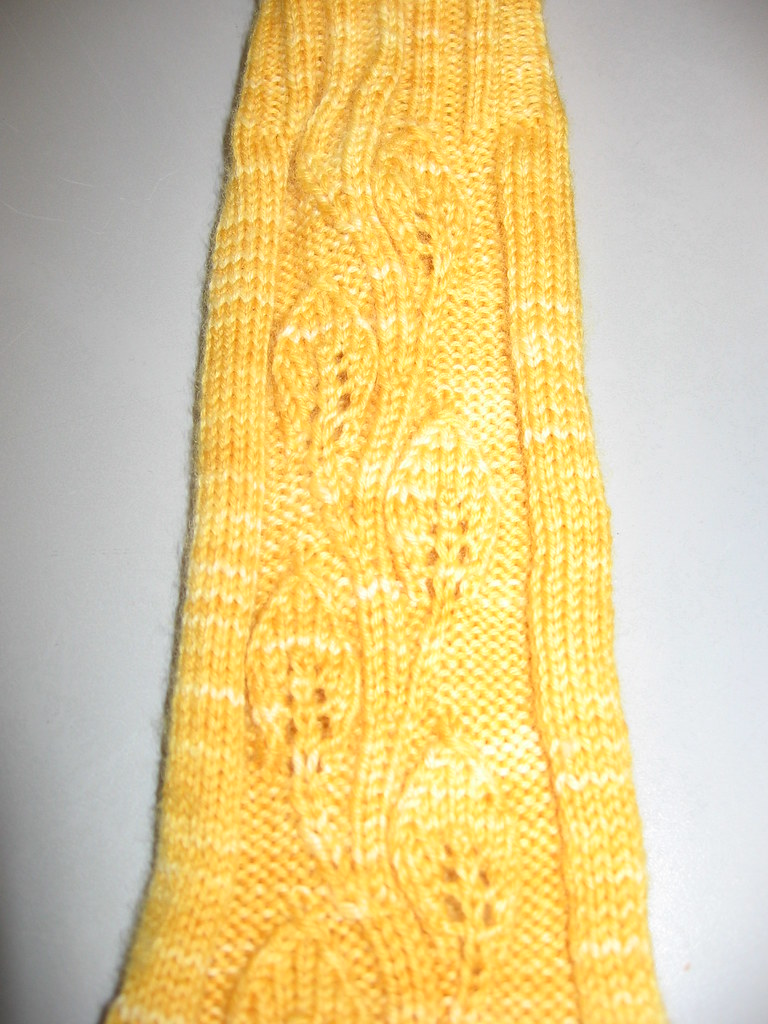
Sorry for the bad pictures. It's deciding to be cold and rainy here today.
Pattern: Midsummer Night's Dream
Yarn: Fancy Dancing Feet, a superwash wool
Needles: US 2, 2.75mm
Dates: Oct 2 - 10, 2009
Modifications: I used my own toe pattern and the sockitecture from Cat Bordhi's Riverbed pattern. That sockitecture is fast becoming my favorite way of doing socks.
My next project wasn't a pair of socks but it was knit out of fingering weight yarn. A couple of yarn festivals ago, I bought some sock yarn in OSU colors, scarlet and grey. Dad is a huge OSU fan so I was going to make a pair of socks for him. That was before I learned that he likes knee highs (well, knee highs for me but midcalves for him) and I really couldn't face doing all of that knitting. Also, I only had bought one skein of yarn. True, it is a very generous skein but not enough for my 6'4" father's feet. Anyway, this yarn has been hanging around my stash for a while now looking lonely. I decided that, if I wasn't going to use it for socks, I should do something with it. After poking around ravelry for a bit, I decided the yarn was destined to be a hat.
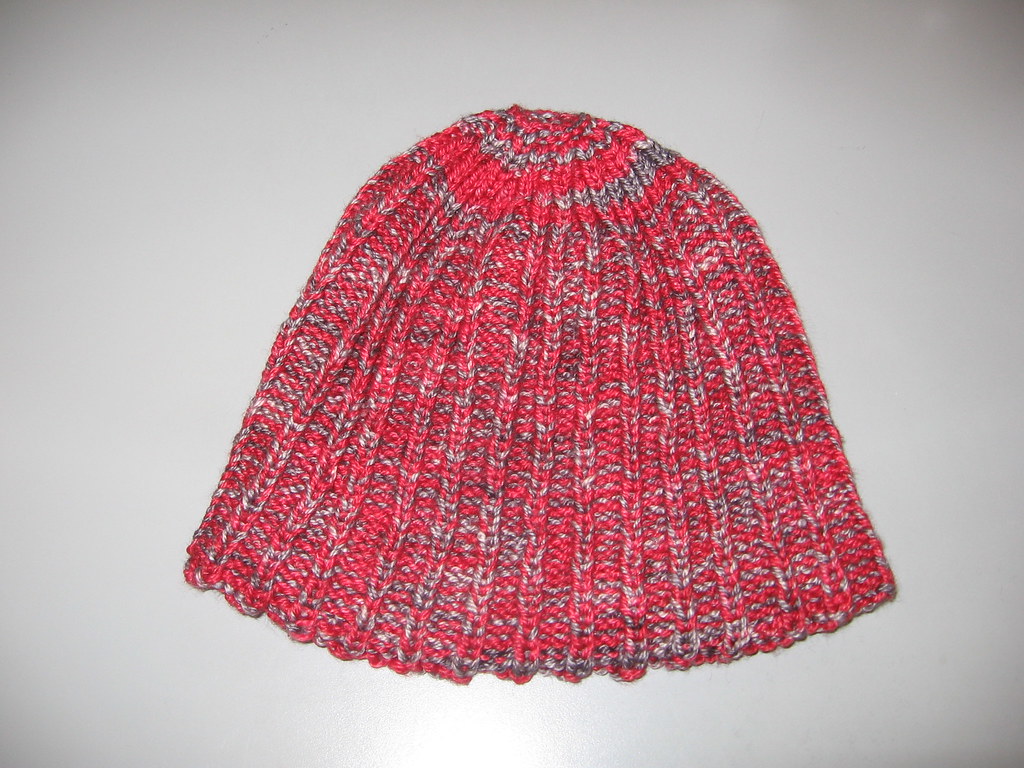
I doubled the yarn and cast on 112 stitches. I did a 3x1 ribbing which doesn't look that exciting on the right side but, when you turn it inside-out, the pattern looks really interesting. I cast on before going to the Quarter Horse Congress with friends, knit on it while we were walking around, and finished it after we sat around a bit and watched a couple of different classes. Definitely a quick little project.
Pattern: None really
Yarn: Yarnsmith Mazu, wool/seacell blend but I've lost the label
Needles: US 6, 4 mm
Dates: Oct 11
Modifications: Well, since I was making it up as I went along, none really.
After finishing that OSU hat, I immediately cast on for another one but with a different yarn. The yarn is one of my handspun yarns, a DK weight called Rainbow Fleece. It is 100% soysilk and was naturally dyed by Earthly Hues.
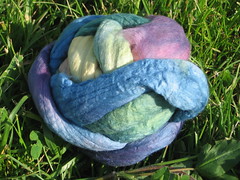
I spun the singles for this yarn back in 2008 and then finally plied everything this past July. The chain plying I did kept all of those colors together and the finished product has a really nice rainbow transition.

After I had finished the yarn, it was calling out to be made into some sort of hat. I pictured some sort of simple ribbed hat so that the pattern and the yarn would work well together. July, then August, then September all passed without me doing anything with this yarn. When I was grabbing the yarn for the other hat, I decided at the last minute to throw this one in my bag, too. This hat took me much longer to finish because a) it wasn't the weekend anymore, b) the house is cold and I didn't want to take my hands from under the sheepskin blanket, and c) I wanted to use up all of the yarn and that made it much longer than the other. I really wanted all of the colors to show up in the hat because what would be the point to have a rainbow hat without the purple?
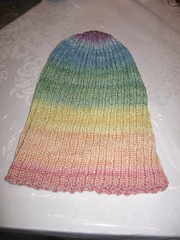
Pattern: None really
Yarn: Handspun, Rainbow Fleece, 100% soysilk
Needles: US 6, 4 mm
Dates: Oct 11 - Oct 14
Modifications: Apparently, I forgot the pattern from one minute to the next and did a 2x1 rib rather than 3x1.
I am apparently on a hat kick because I've started another one (!). This time, I'm doubling sock yarn again and making sure that I do a 3x1 rib. I don't think I even have this yarn in my ravelry stash because it has been in the stash for so long. It was probably the second sock yarn that I bought and I made one sock out of it back when I was doing socks one at a time. Yeah, that didn't last long. I know that SSS hits me badly and knitting two socks at a time is the only way that I get pairs done. Another reason this sock didn't last was that the yarn pooled horribly around the ankle. So it was time to reuse the yarn for something else. I think that this hat will go in the holiday gift pile for a recipient to be named.
Hopefully, I'll continue with Socktober and be able to finish up at least one other pair of socks before the end of the month. I have a number of WIPs hanging around including a pair of toe-up Jaywalkers on which I've turned the heel and just need to do the leg. There is also a pair of cabled knee highs from last Socktober that have the entire intricate leg finished and I just have to turn the heel and finish the foot. Simple, really, after all of the work on the leg. Remind me why haven't I already finished them?
Oh! I almost forgot what I'm calling the Blanket of Insanity aka sock yarn blanket. I'm still continuing with the squares but now I have to finish up some socks in order to get the leftovers. Thanks to the Midsummer socks there is plenty of yellow left and I have a little bit of the OSU yarn from the hat left, too. Right now, there are somewhere between 45-50 squares finished with their ends woven in.
I finished my first pair of socks in 8 days! During school, I could finish a pair that quickly because of all the 3 hour classes of


Sorry for the bad pictures. It's deciding to be cold and rainy here today.
Pattern: Midsummer Night's Dream
Yarn: Fancy Dancing Feet, a superwash wool
Needles: US 2, 2.75mm
Dates: Oct 2 - 10, 2009
Modifications: I used my own toe pattern and the sockitecture from Cat Bordhi's Riverbed pattern. That sockitecture is fast becoming my favorite way of doing socks.
My next project wasn't a pair of socks but it was knit out of fingering weight yarn. A couple of yarn festivals ago, I bought some sock yarn in OSU colors, scarlet and grey. Dad is a huge OSU fan so I was going to make a pair of socks for him. That was before I learned that he likes knee highs (well, knee highs for me but midcalves for him) and I really couldn't face doing all of that knitting. Also, I only had bought one skein of yarn. True, it is a very generous skein but not enough for my 6'4" father's feet. Anyway, this yarn has been hanging around my stash for a while now looking lonely. I decided that, if I wasn't going to use it for socks, I should do something with it. After poking around ravelry for a bit, I decided the yarn was destined to be a hat.

I doubled the yarn and cast on 112 stitches. I did a 3x1 ribbing which doesn't look that exciting on the right side but, when you turn it inside-out, the pattern looks really interesting. I cast on before going to the Quarter Horse Congress with friends, knit on it while we were walking around, and finished it after we sat around a bit and watched a couple of different classes. Definitely a quick little project.
Pattern: None really
Yarn: Yarnsmith Mazu, wool/seacell blend but I've lost the label
Needles: US 6, 4 mm
Dates: Oct 11
Modifications: Well, since I was making it up as I went along, none really.
After finishing that OSU hat, I immediately cast on for another one but with a different yarn. The yarn is one of my handspun yarns, a DK weight called Rainbow Fleece. It is 100% soysilk and was naturally dyed by Earthly Hues.

I spun the singles for this yarn back in 2008 and then finally plied everything this past July. The chain plying I did kept all of those colors together and the finished product has a really nice rainbow transition.

After I had finished the yarn, it was calling out to be made into some sort of hat. I pictured some sort of simple ribbed hat so that the pattern and the yarn would work well together. July, then August, then September all passed without me doing anything with this yarn. When I was grabbing the yarn for the other hat, I decided at the last minute to throw this one in my bag, too. This hat took me much longer to finish because a) it wasn't the weekend anymore, b) the house is cold and I didn't want to take my hands from under the sheepskin blanket, and c) I wanted to use up all of the yarn and that made it much longer than the other. I really wanted all of the colors to show up in the hat because what would be the point to have a rainbow hat without the purple?

Pattern: None really
Yarn: Handspun, Rainbow Fleece, 100% soysilk
Needles: US 6, 4 mm
Dates: Oct 11 - Oct 14
Modifications: Apparently, I forgot the pattern from one minute to the next and did a 2x1 rib rather than 3x1.
I am apparently on a hat kick because I've started another one (!). This time, I'm doubling sock yarn again and making sure that I do a 3x1 rib. I don't think I even have this yarn in my ravelry stash because it has been in the stash for so long. It was probably the second sock yarn that I bought and I made one sock out of it back when I was doing socks one at a time. Yeah, that didn't last long. I know that SSS hits me badly and knitting two socks at a time is the only way that I get pairs done. Another reason this sock didn't last was that the yarn pooled horribly around the ankle. So it was time to reuse the yarn for something else. I think that this hat will go in the holiday gift pile for a recipient to be named.
Hopefully, I'll continue with Socktober and be able to finish up at least one other pair of socks before the end of the month. I have a number of WIPs hanging around including a pair of toe-up Jaywalkers on which I've turned the heel and just need to do the leg. There is also a pair of cabled knee highs from last Socktober that have the entire intricate leg finished and I just have to turn the heel and finish the foot. Simple, really, after all of the work on the leg. Remind me why haven't I already finished them?
Oh! I almost forgot what I'm calling the Blanket of Insanity aka sock yarn blanket. I'm still continuing with the squares but now I have to finish up some socks in order to get the leftovers. Thanks to the Midsummer socks there is plenty of yellow left and I have a little bit of the OSU yarn from the hat left, too. Right now, there are somewhere between 45-50 squares finished with their ends woven in.
Subscribe to:
Comments (Atom)


